The Wild Pyrenees: Offroad Camping & Overlanding Trip 2025
About our 4500 km road trip with our kids to explore the vast and magnificent landscapes of the Pyrenees and Bardenas Reales

We are a family of four with two kids. We upgraded our Toyota Land Cruiser J12 3.0 D-4D to be the best camping and offroading companion for our 3 week trip to northern Spain & southern France. I have build an outdoor kitchen and a pump case with filters and a stainless steel tank for water, about which I will be writing about in more detail in other articles ...
In total, we drove over 4570 kms in just 2 1/2 weeks. What I have learned during this time is:
True home is in nature; not in a sterile & anonymous apartment. In nature I feel at home, in nature I can be myself.
We started our trip to the Gorges du Verdon in France in mid June of 2025 and packed our rig with all the stuff we needed. The back and part of the rack is filled with equipment, the tent and clothes are in two large water-proof bags, strapped to the rack. On the left side of the rear rack is the 42 liter stainless-steel tank. In the middle between tank and box fits our separation toilet nicely. For this toilet box, I have designed two sheet metal brackets to fix it to the Front Runner roof rack.
Our Overlanding Equipment
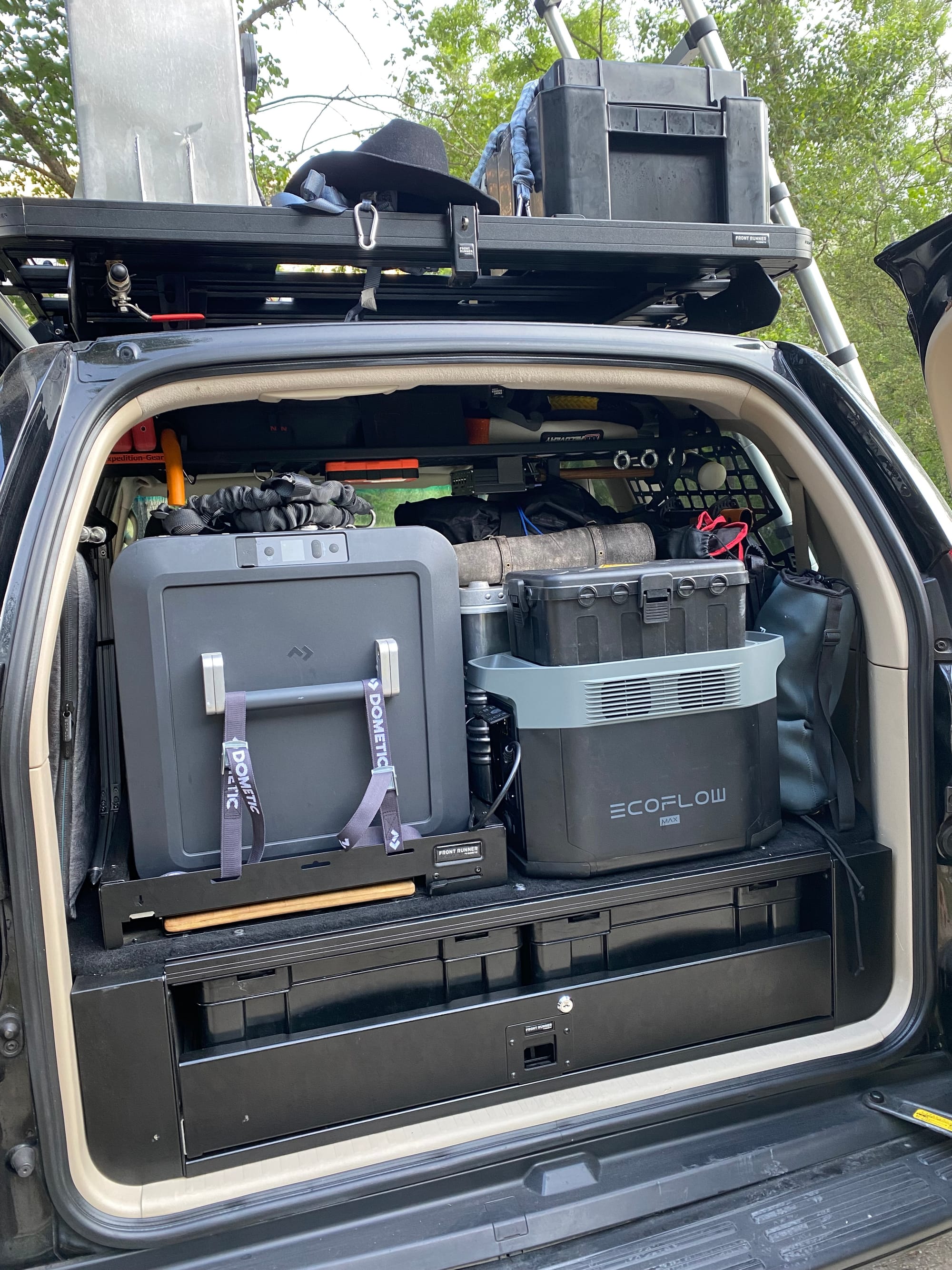
With our setup we are completely self-sufficient with a 42 liter water storage, water filtering and UV disinfection system and a pump for filling up the water tank on top of the car. We are completely self-sufficient with our setup. It includes
- 12 m² tipi tent
- 55 liter fridge
- 2 kWh battery
- 200 W solar panel
- 5G router with antenna (coming soon)
- 42 liter stainless steel water tank
- DIY Kitchen Box
- portable water pump with filters, including an UV sterilisation unit, hoses and connectors
- 6 box drawer system
- tools, compressor, knifes, a saw, an axe and a machete
- photo equipment
- a portable separating toilet Trelino Evo M with custom-made mount bracket for the Front Runner Slimline II rack
- and much more ...
Custom-made Overlanding Equipment
I love building my own gear — not just because it’s fun, but because I learn something new with every project. Custom-making our equipment allows me to tailor everything perfectly to our specific needs, whether it’s for travel, storage, or off-grid living. Through this blog, I’ll be sharing my ideas, the build process, and the detailed plans behind each creation — so you can adapt them to your own adventures too.
Powering Off-Grid Life on the Road
Camping off-road and deep in nature means being fully self-sufficient — especially when it comes to powering essentials like the fridge, laptop, camera gear, and most importantly, pumping and filtering water from and to our onboard tank.
In the back of our Land Cruiser, we’ve installed a 2 kWh battery, recently upgraded from a smaller setup. We’re currently using the EcoFlow Delta 2 Max, a system we've grown to trust thanks to consistently good experiences with the brand. The only issue we encountered with this system was that the BMS calculated the remaining power wrongly. At the evening, the battery showed 87% of remaining power and the next morning the display informed us, that only 17% was left. We were confused and wondered on what could have happened, since nothing had changed in regards to usage. Such an obvious fast "discharge" only occurred once during our travels and hopefully this never happens again ... Apparently, the BMS sometimes makes mistakes and a reboot of the battery would have helped.
While a portable solar panel is great in theory, it’s not always ideal in practice. Since the battery stays in the back to power the fridge full-time, we often have to run a long cable just to position the panel in full sun — all while keeping the vehicle itself in the shade. With only around 180 watts of solar input, fully recharging our 2 kWh capacity can be slow and will take the whole day.
To give the system a proper top-up, we occasionally stop at a campground where we can plug in and recharge the battery quickly at 2 kW. These breaks are practical not only for charging but also for showers, laundry, and a reset before heading back off-grid.
Our next upgrade will be an 800-watt inverter, which will allow us to charge the battery while driving. That way, even the journey to the next wild spot becomes a productive part of the off-grid routine. But this would require a more powerful alternator.
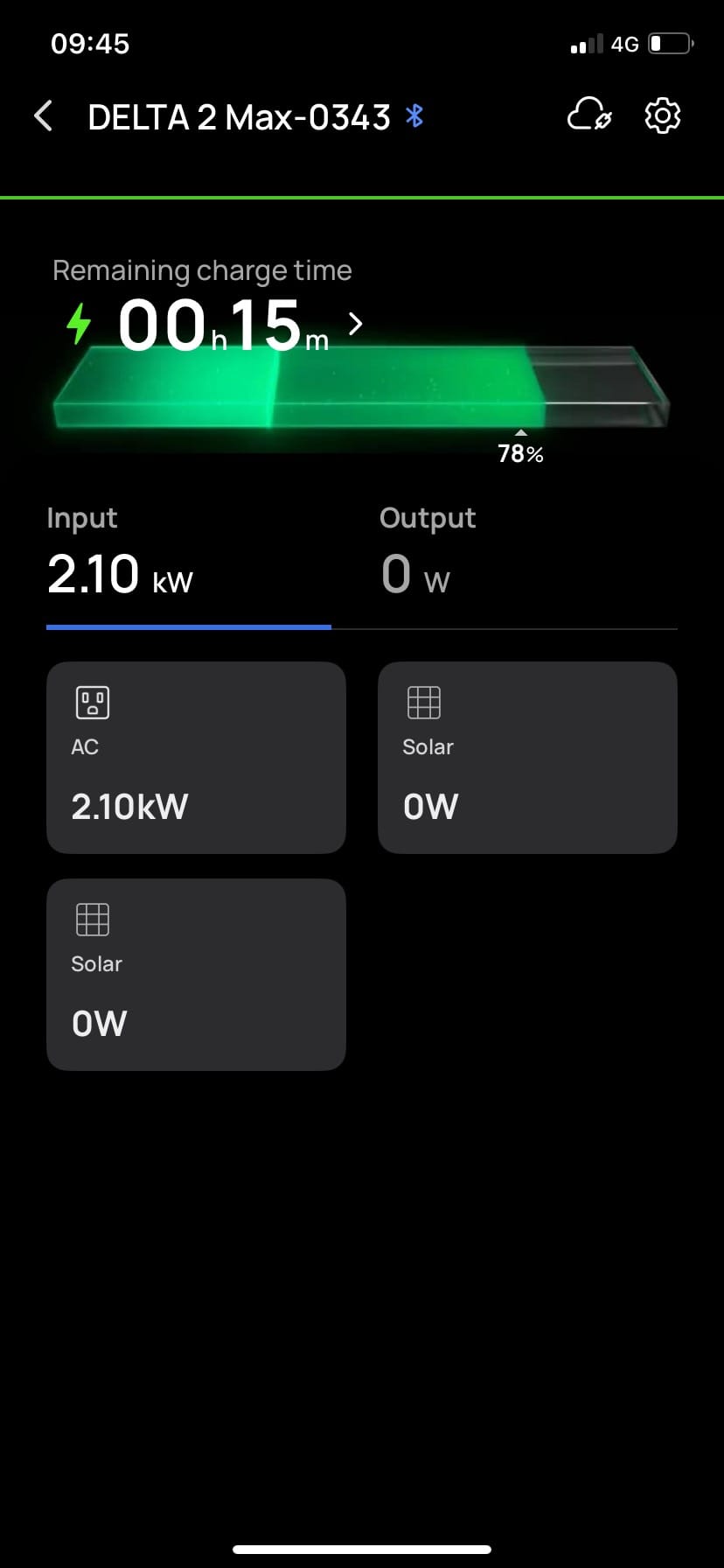
Keeping it Organised
Since we have two kids and a lot of equipment, we need to have a checklist to stay organised and to not forget anything. There is a packing list I created in Airtable, there I can create categories and the location, where I can find my stuff. This is very handy because you can filter by location or category.
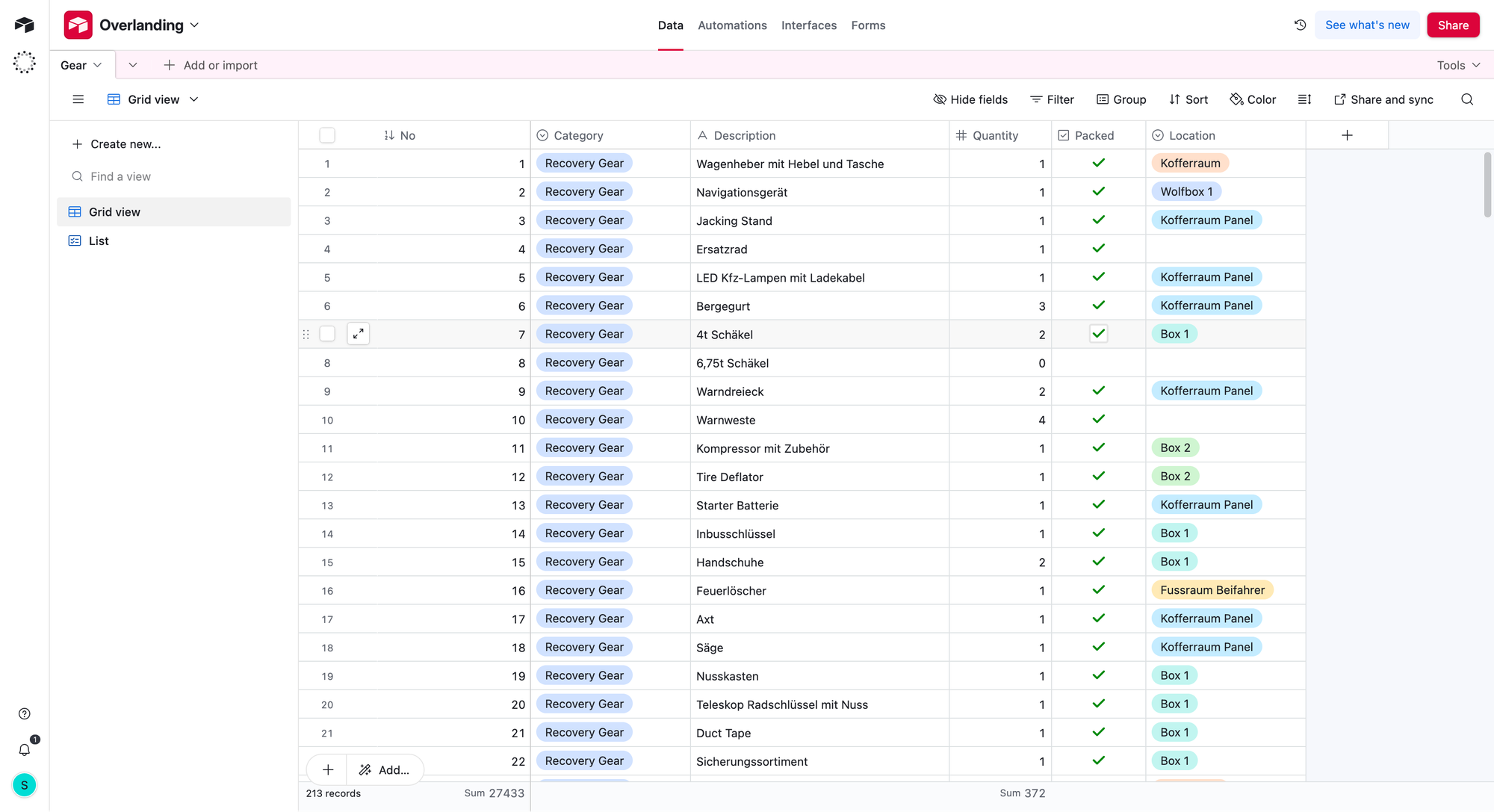
The only thing that is missing was a 800 W AC inverter to charge the 2 kWh battery more quickly while on the road. We would need one full day to charge the battery by solar power but since we want to explore our surroundings.
Its a lot of work to set everything up, the tent especially. However, it is worth it and we wanted to have a large tent for the four of us made of a natural fabric. That is why we chose a tipi tent, the Nordisk Alfheim.
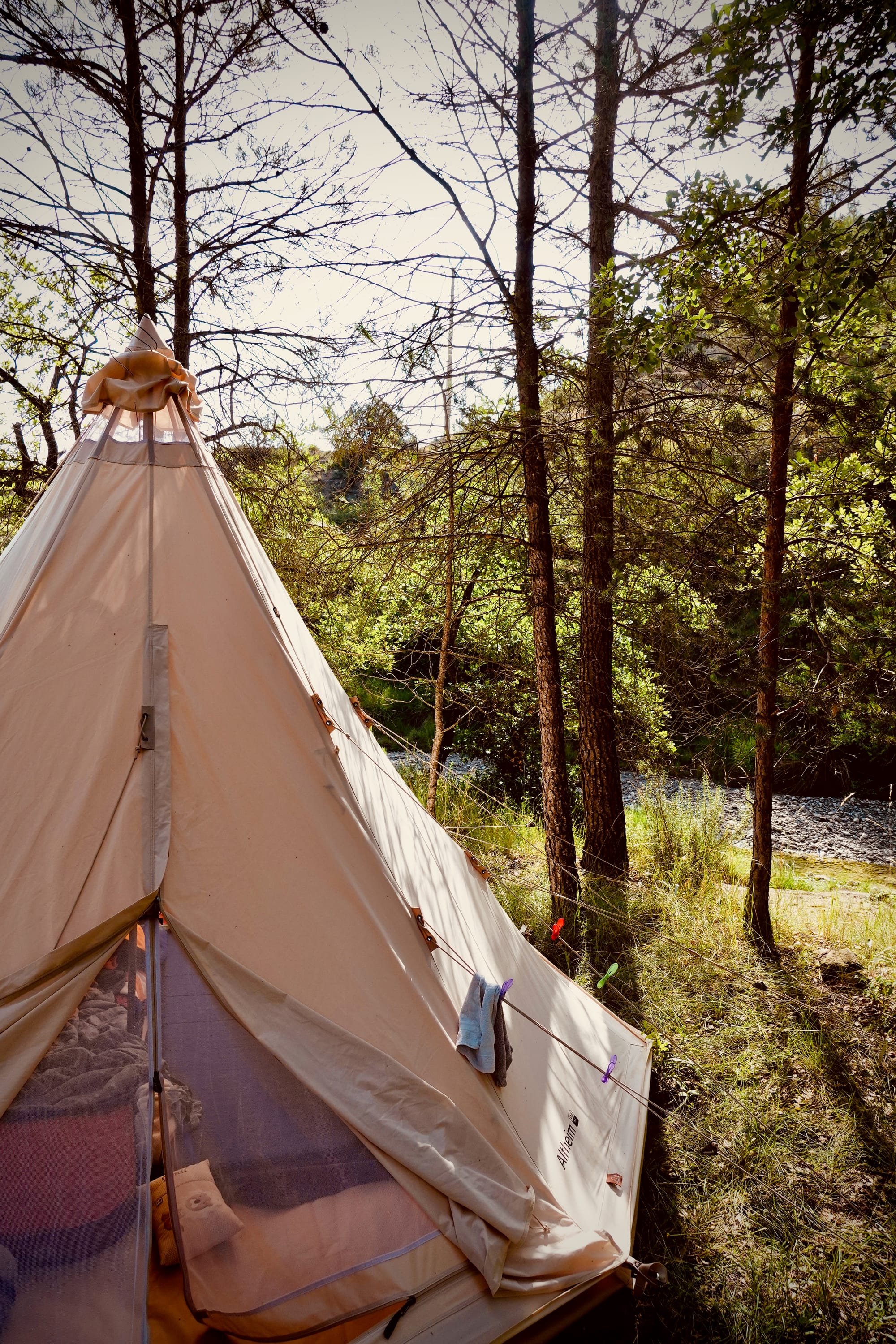
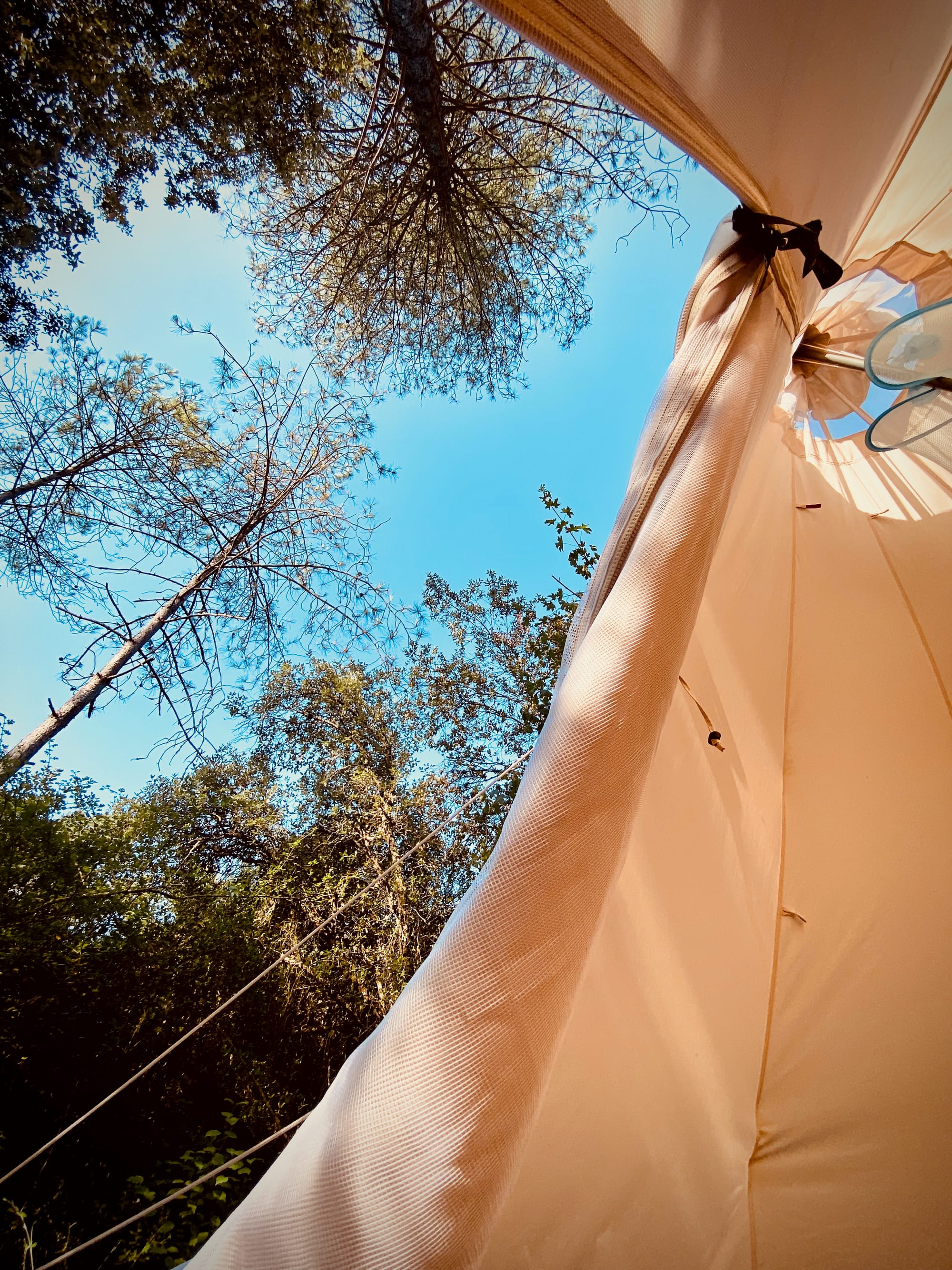
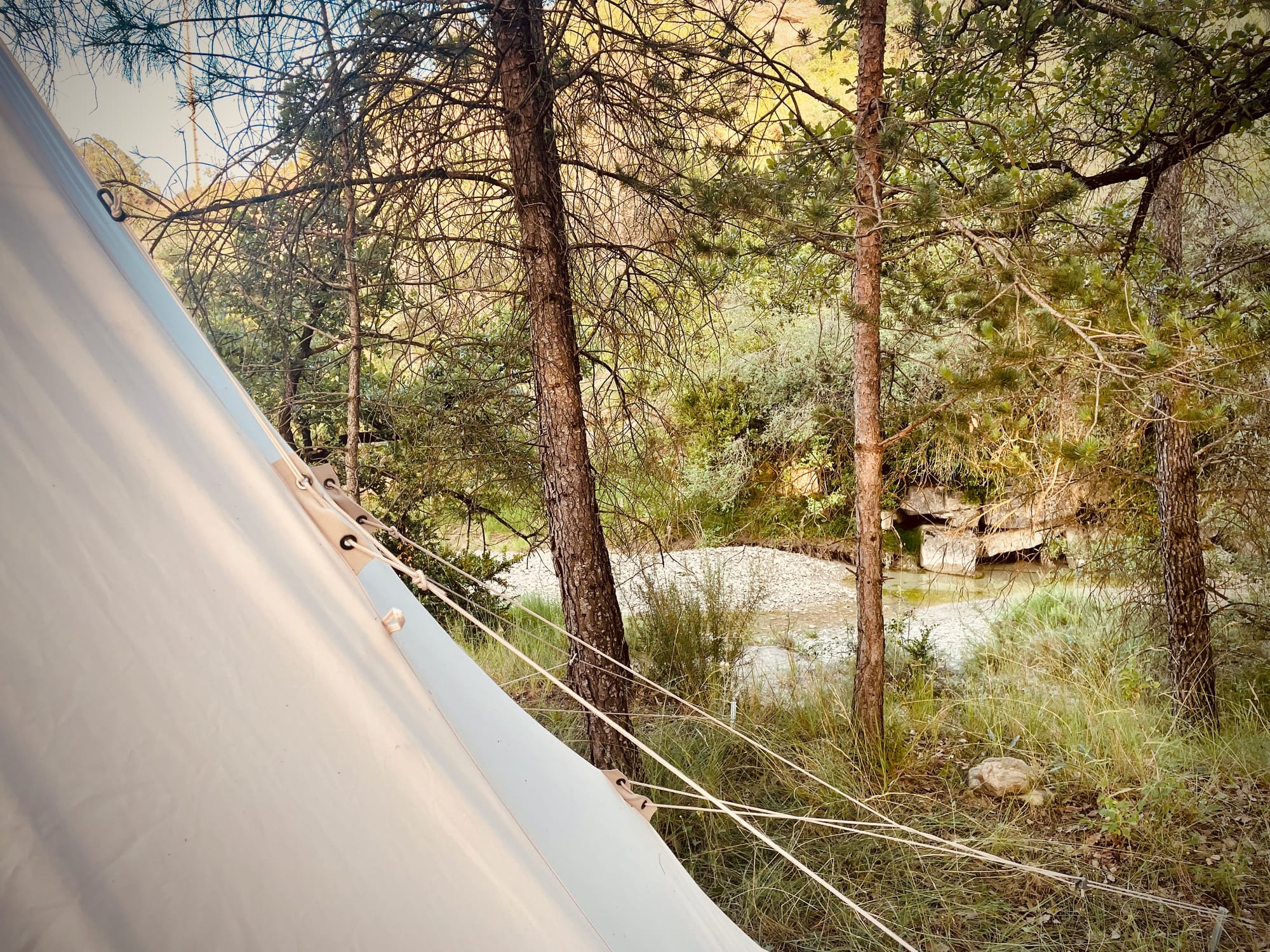
This tent has a lot of space for the four of us and it blends nicely with its natural environment, while making us feel at home in nature.
Rough nature - Gorges du Verdon
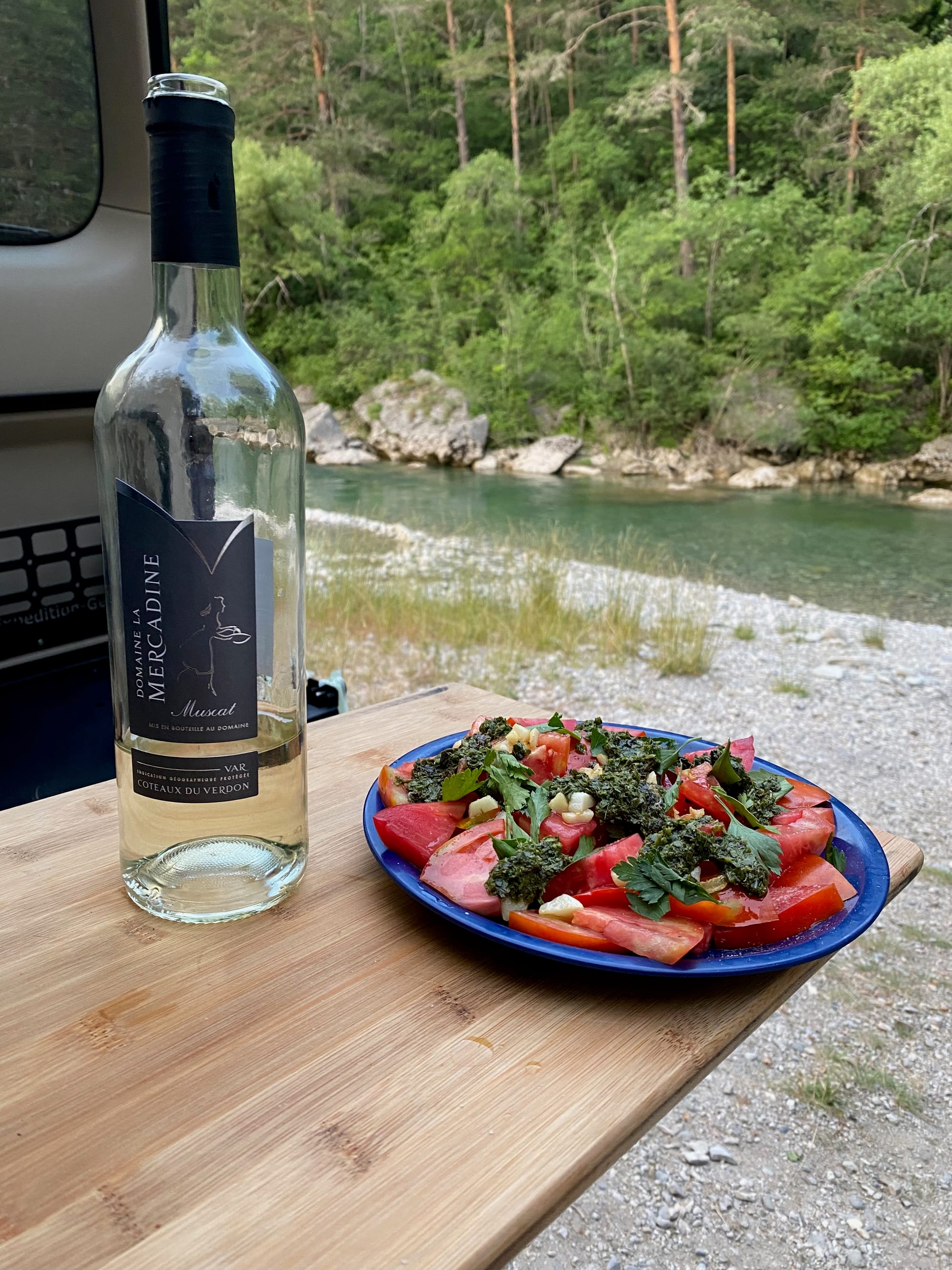
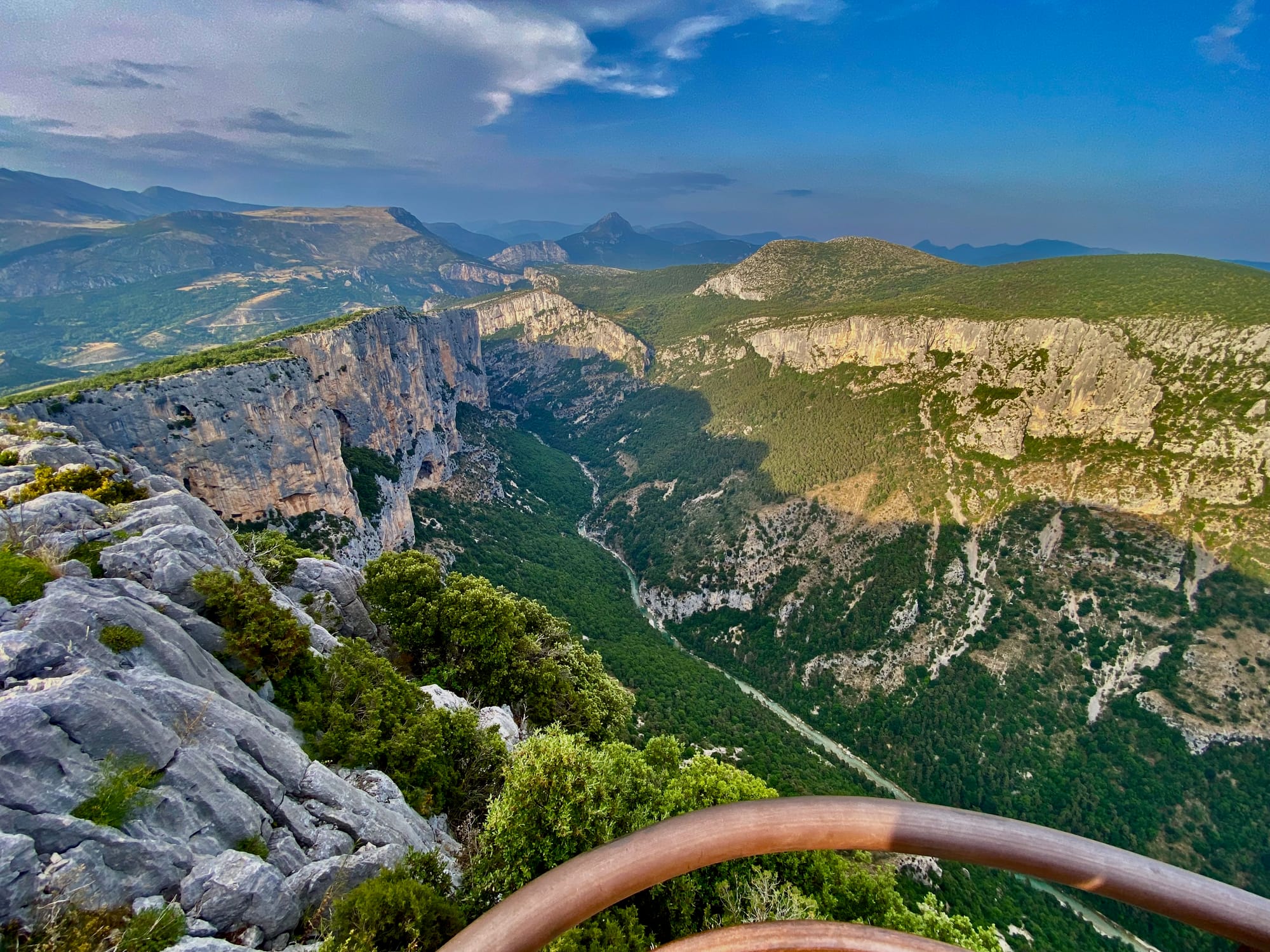
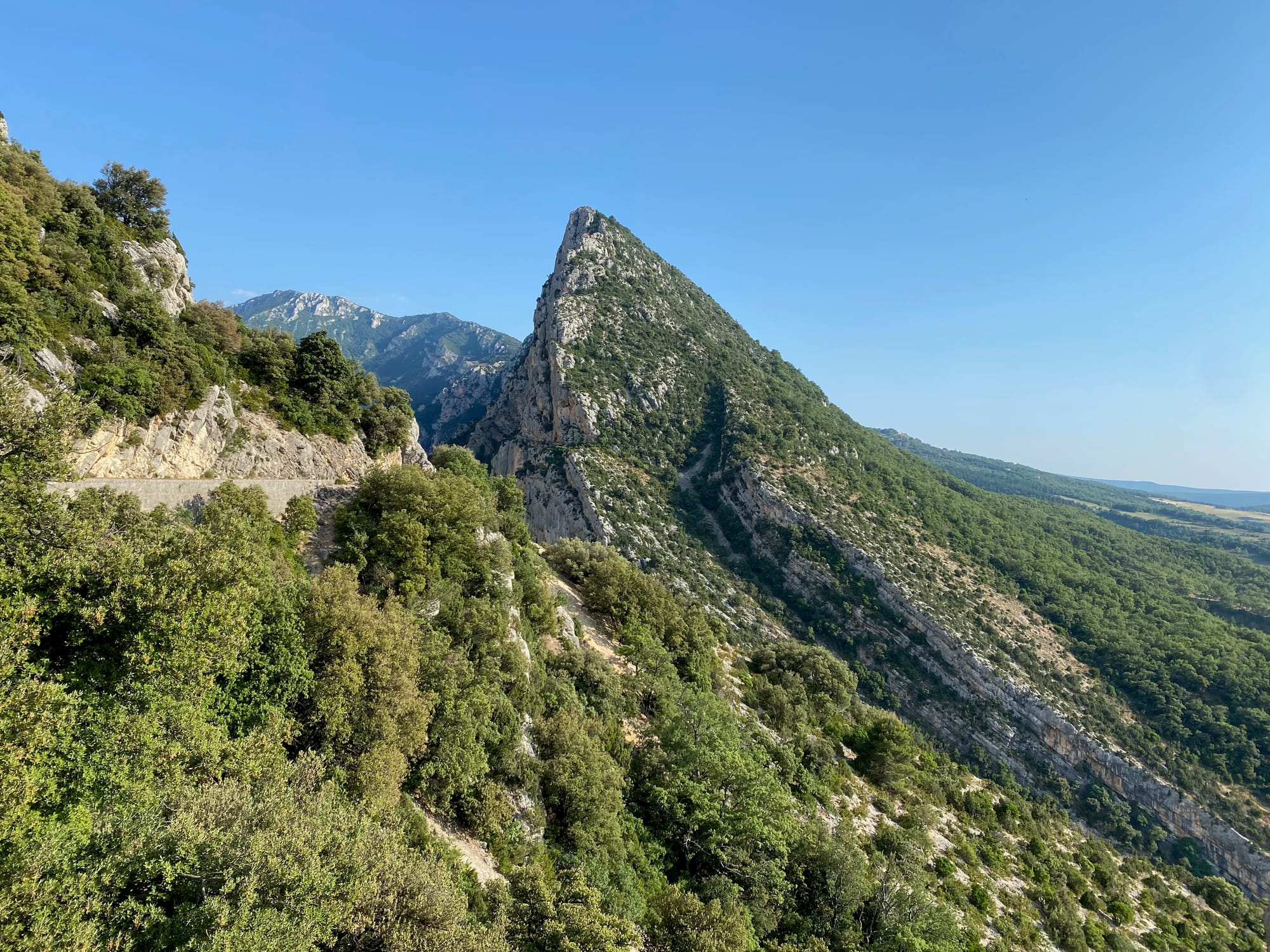
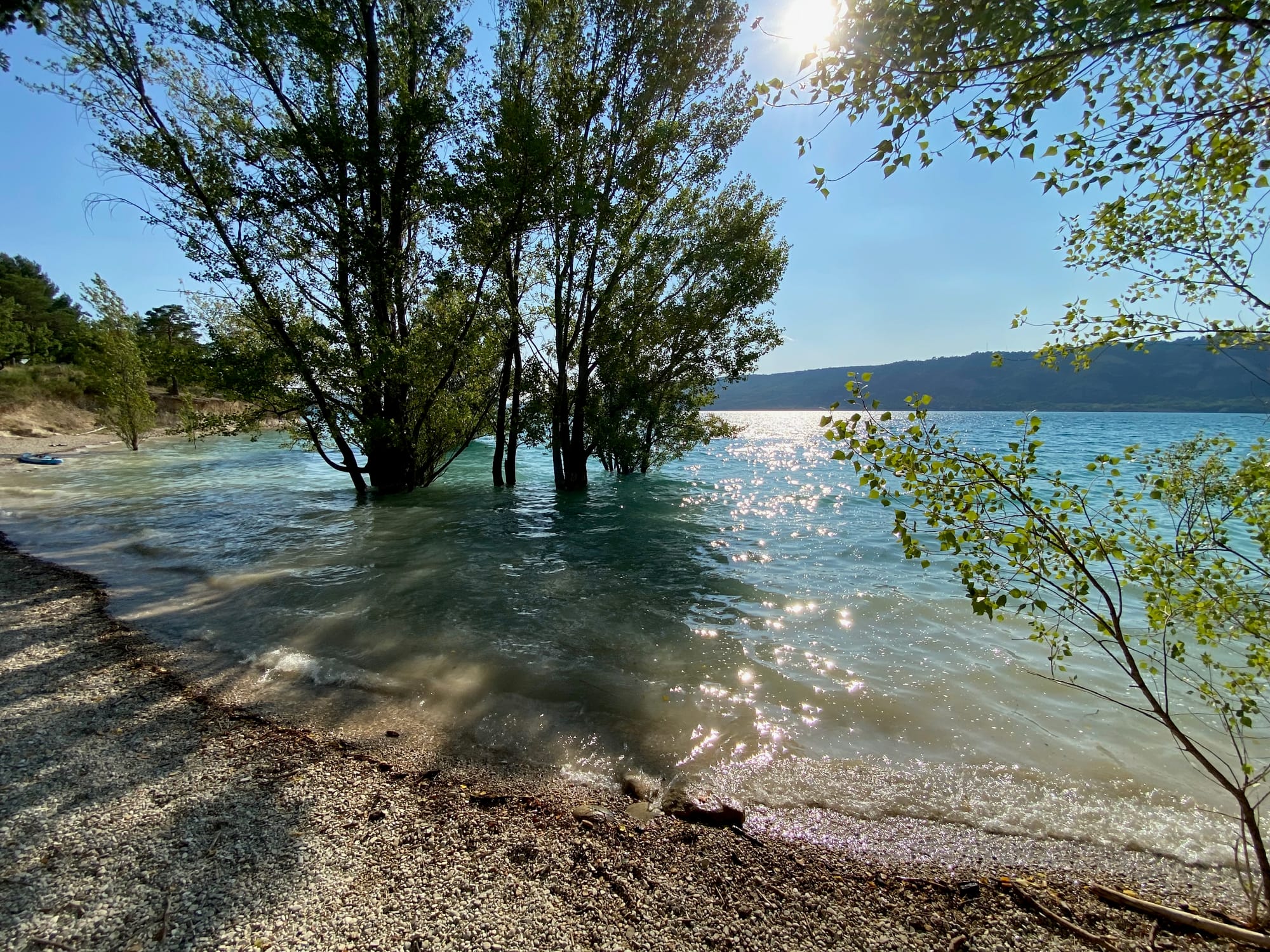
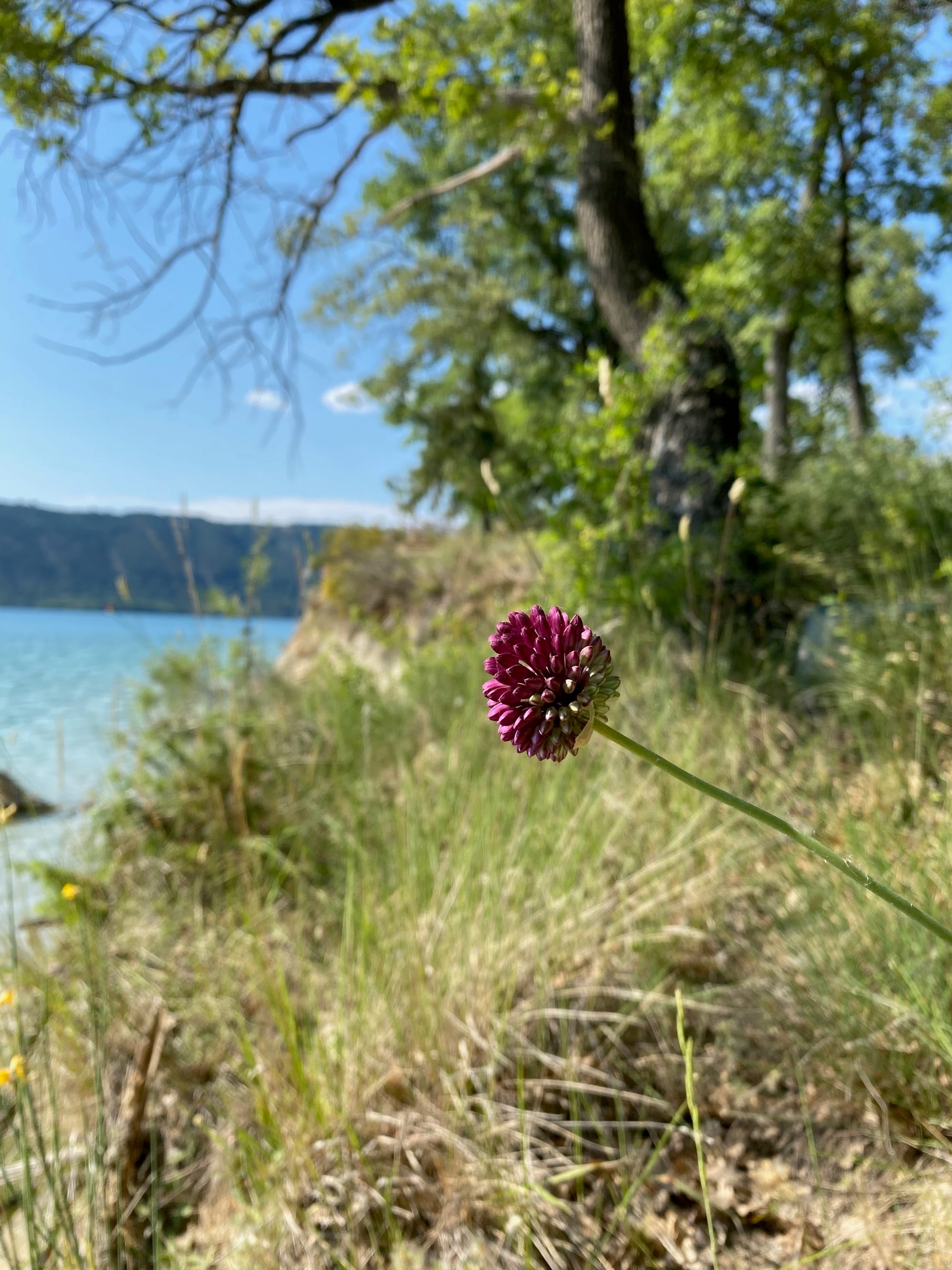
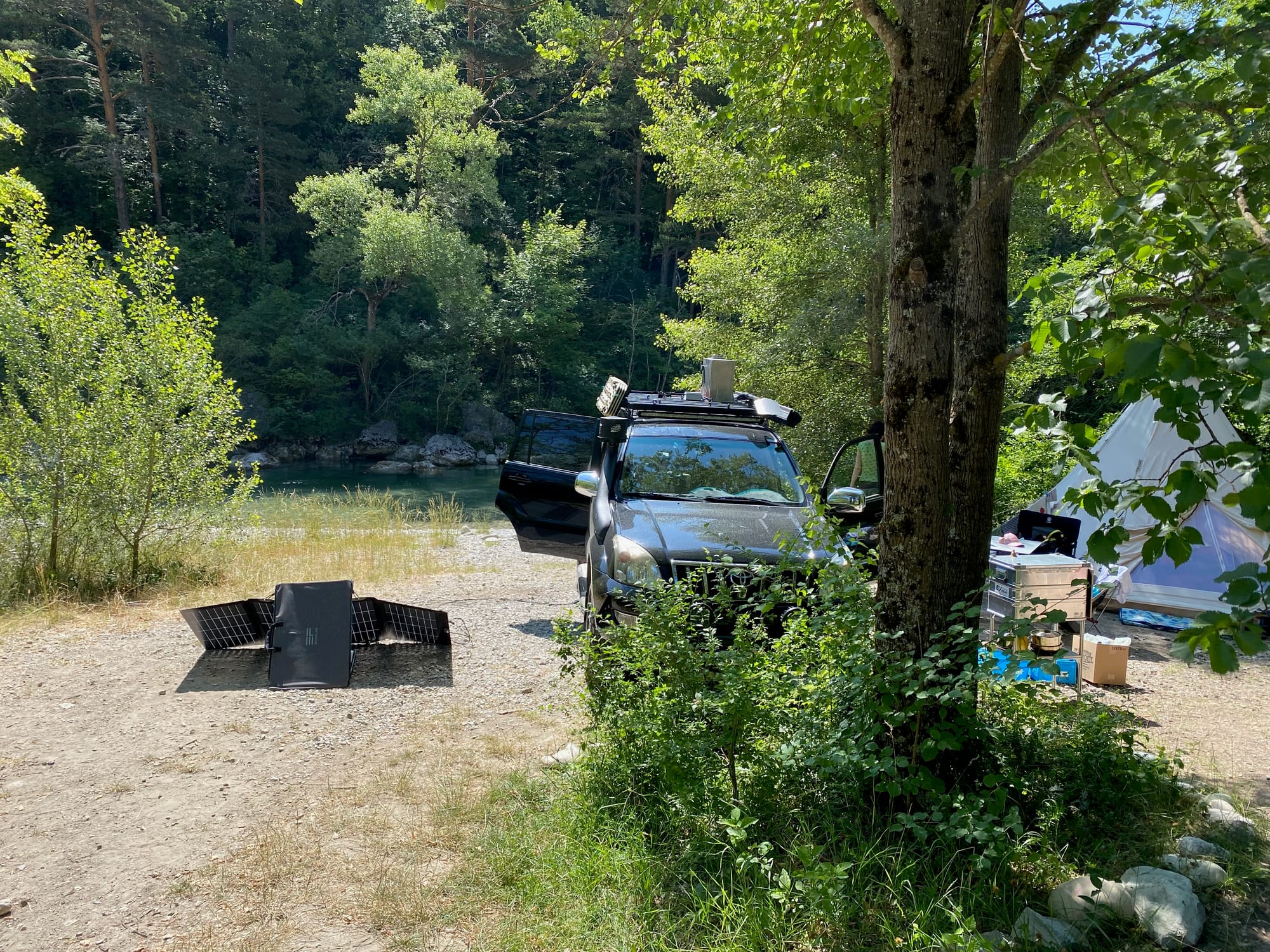
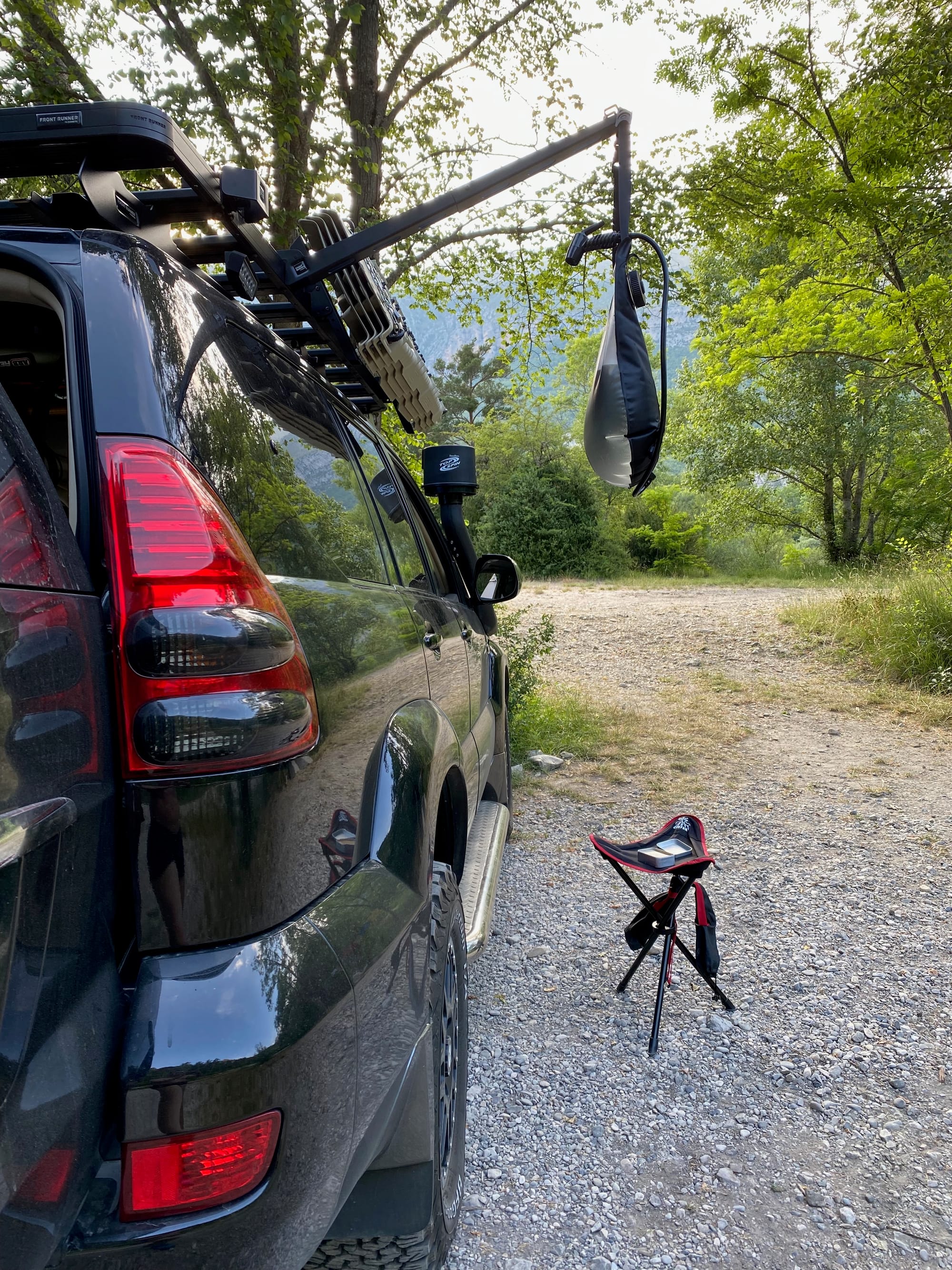
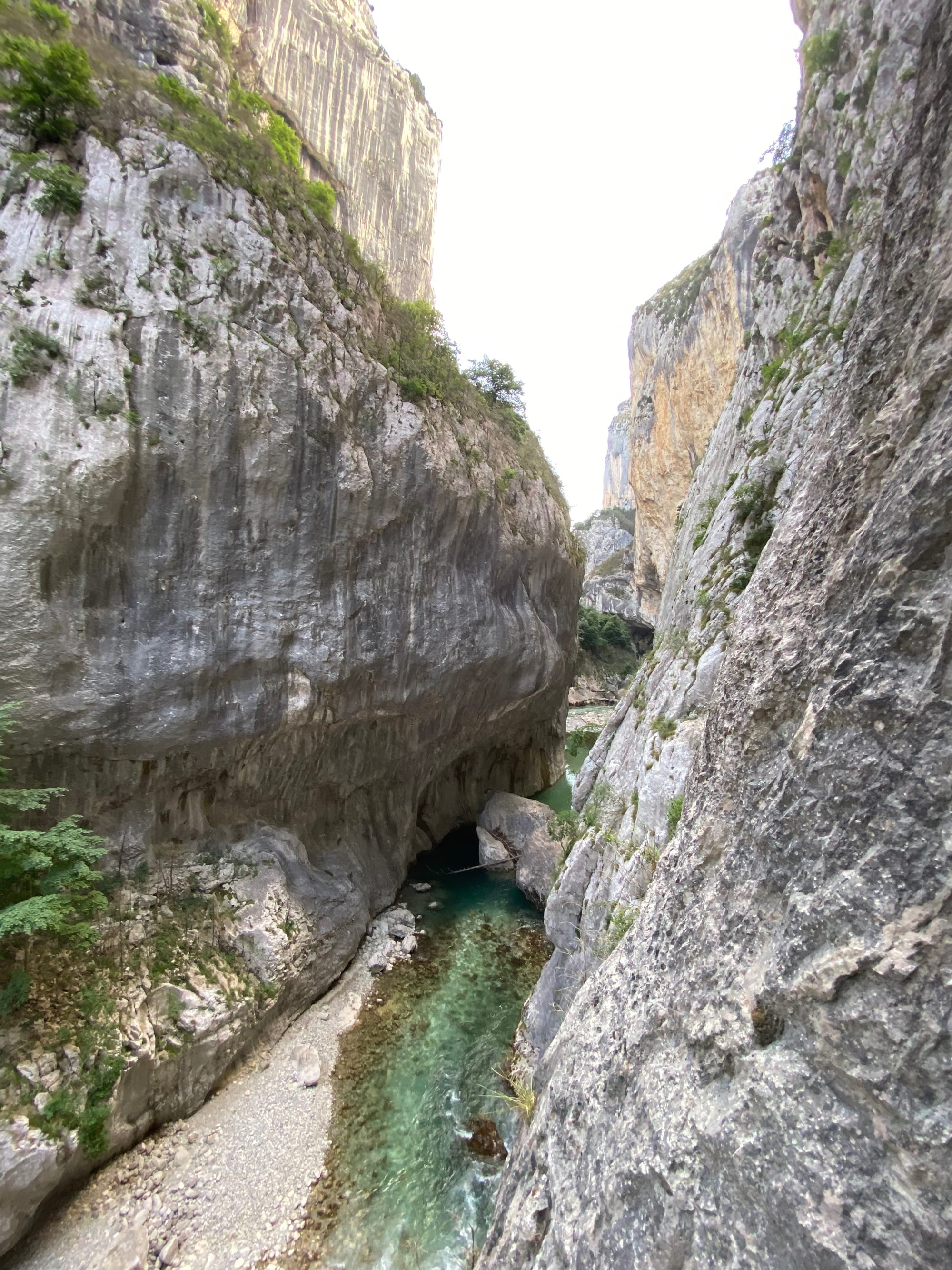
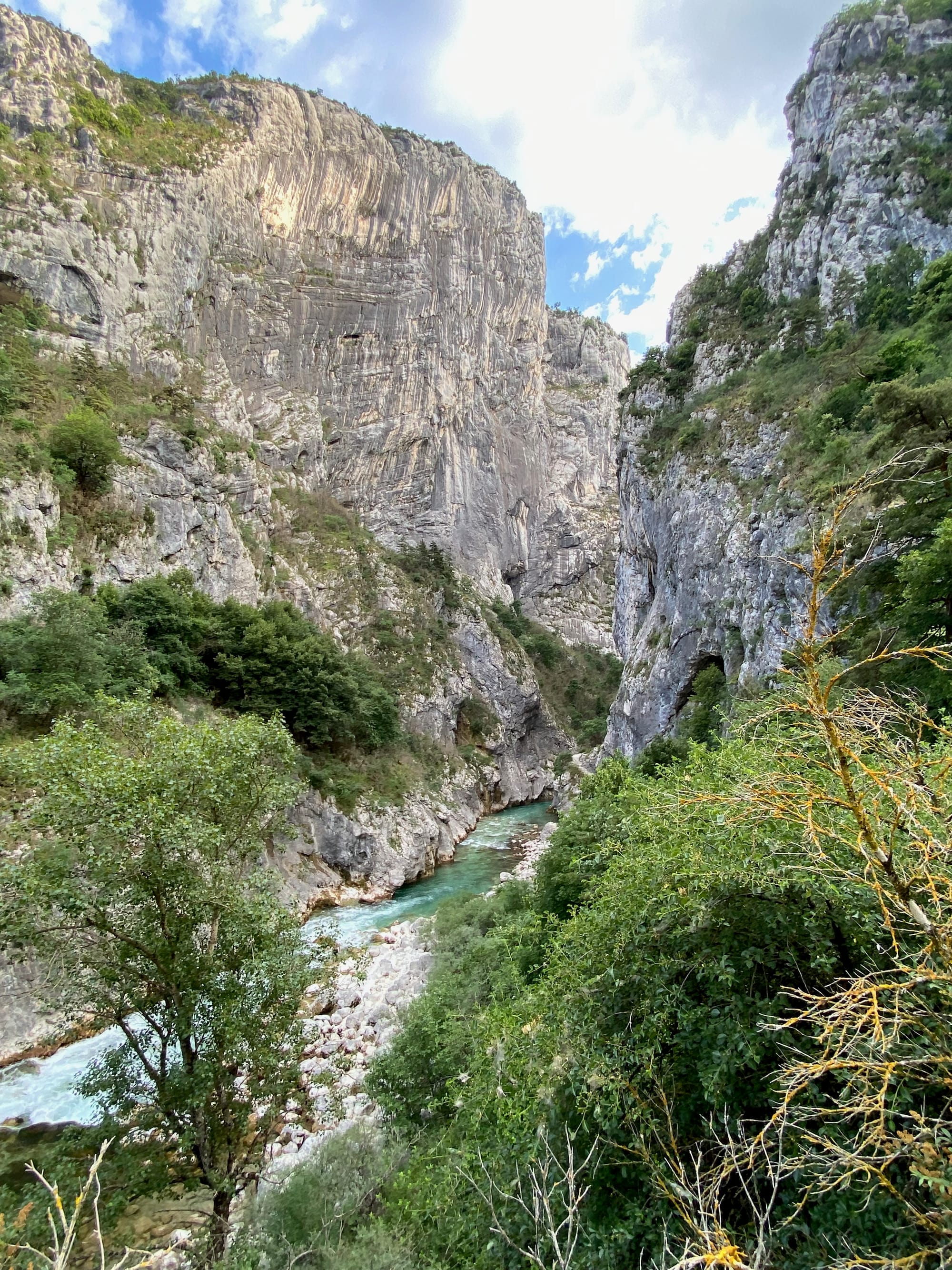
Camping at the Verdon river; rough and beautiful nature
Tucked away in southeastern France, the Gorges du Verdon is one of Europe’s most breathtaking natural wonders — often called the Grand Canyon of Europe. Carved over millennia by the turquoise Verdon River, the canyon stretches for 25 kilometers and plunges to depths of over 700 meters, surrounded by dramatic limestone cliffs and lush Provençal landscapes.
Whether you're hiking along the Sentier Blanc-Martel, kayaking through the canyon’s narrowest sections, or simply taking in the views from the scenic Route des Crêtes, the area offers a perfect mix of adventure and serenity. Wild camping is not allowed in the gorge itself, but nearby campsites and quiet forest roads make it an unforgettable stop for vanlifers and overlanders.
Crystal-clear waters, medieval villages like Moustiers-Sainte-Marie, and endless sky above — the Gorges du Verdon is a must-see for anyone chasing nature at its most epic.
Castellane is a small and welcoming town surrounded by beautiful scenery and good food. If you're ever in the Verdon area, it's worth taking a break here to enjoy the peaceful atmosphere and the local flavors.
There’s a small organic shop in town called Maison de Produits de Pays des Gorges du Verdon. It offers local produce, cheeses, sausages, fruit, lavender jam, honey, and more. If you're nearby, it's a great spot to pick up something fresh and regional.
Aínsa & the Sobrarbe Region – Wild Beauty in the Spanish Pyrenees
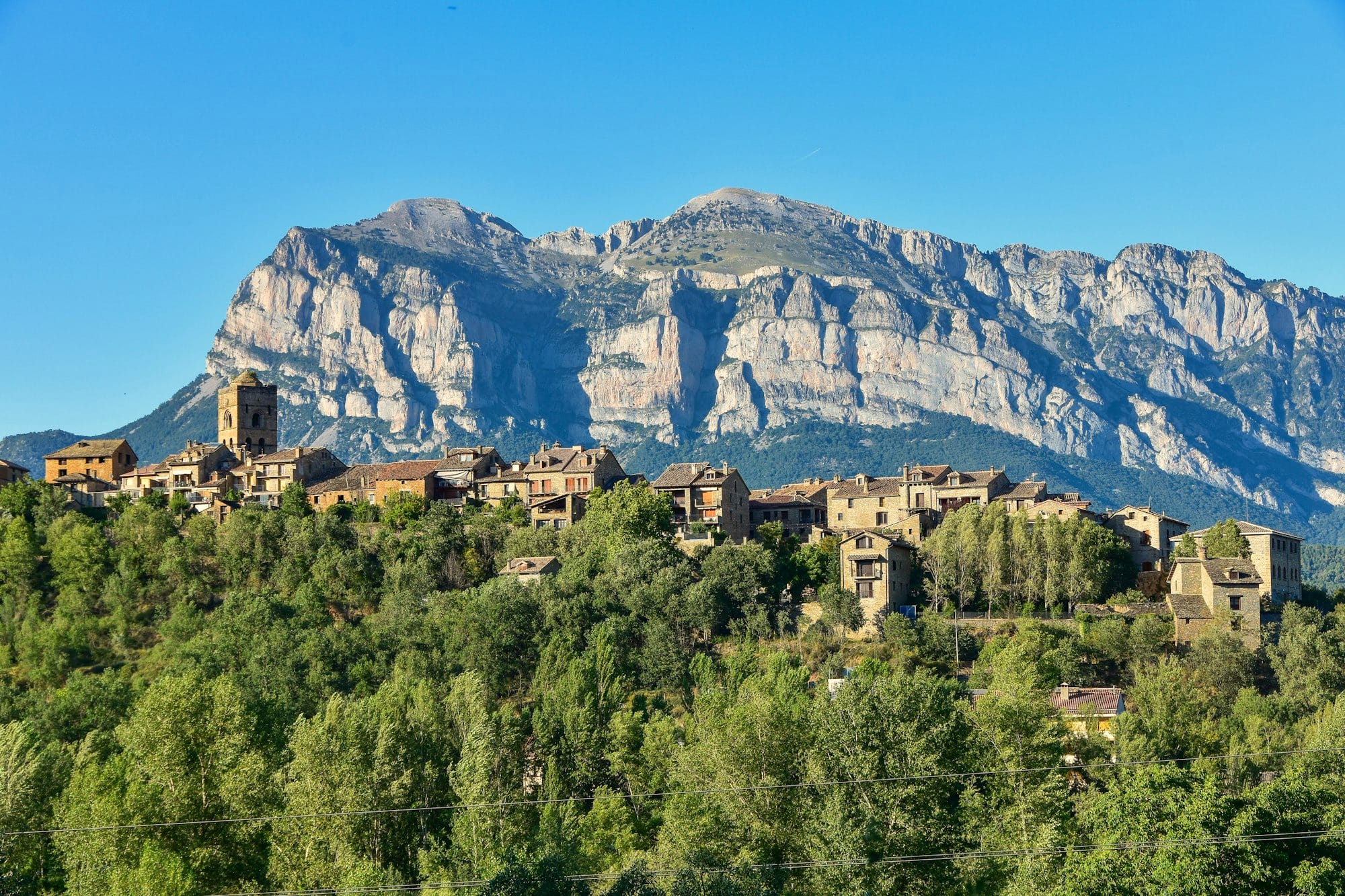
Here, in the Spanish Pyrenees we experienced beautiful nature and solitude while traveling through a magnificent piece of land. This is a quiet and natural landscape, untouched to a large degree with small towns and many empty roads, beautiful views to different stone and rock formations & canyons, home to eagles and vultures.
The Cañón de Añisclo is one of the attractions north of Aínsa, with a one-way road taking you along the river, winding through a narrow gorge. Here are some impressions of this beautiful region.
Tucked deep within the Ordesa y Monte Perdido National Park, the Cañón de Añisclo is one of the Pyrenees’ most dramatic and lesser-known gorges — a place where nature still feels raw, wild, and untouched.
Carved by the Río Bellós over millions of years, this narrow canyon plunges between towering limestone cliffs cloaked in dense beech and pine forests. As you wind through it, the landscape shifts from mossy ravines and waterfalls to high-altitude cliffs and ancient hermitages hidden in the rock.
Unlike the more visited Ordesa Valley, the Añisclo Canyon offers a quieter, more secluded experience — ideal for hikers, nature lovers, and overlanders seeking rugged beauty off the beaten path. The road into the canyon is narrow and winding, often carved directly into the rock, making it a scenic drive you won’t forget.
Add this stop to your Pyrenees journey if you're looking for raw nature, misty forests, and deep silence — this is the wilder side of Aragón.
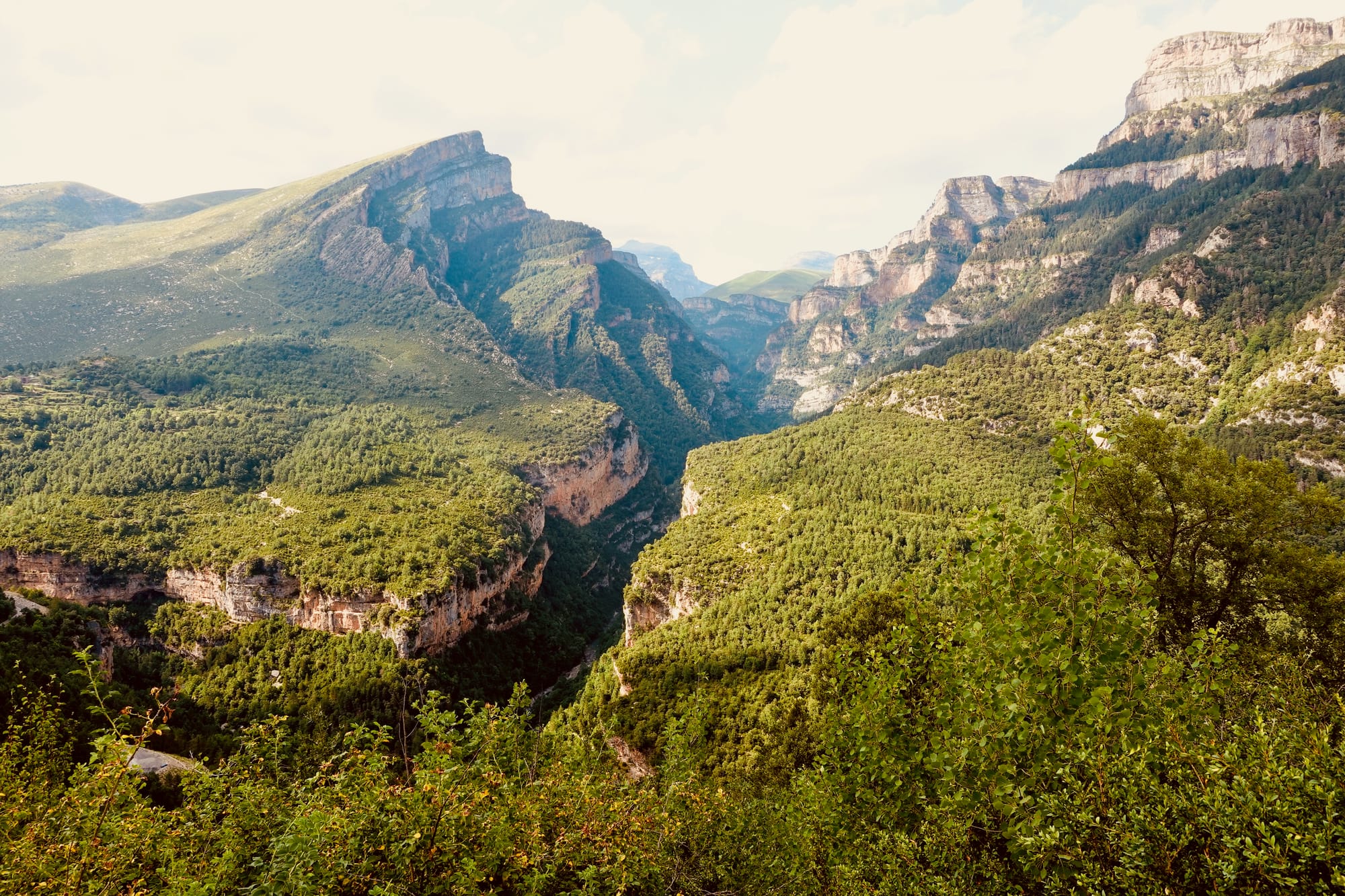
During our stay in Aínsa, we had the chance to camp on private land, tucked away right beside a small, crystal-clear river. The spot felt like a hidden sanctuary — peaceful, remote, and surrounded by nature. While relaxing near the water, we spotted a variety of fascinating animals, from curious birds to small reptiles — a perfect reminder of how alive and untouched this corner of Aragón really is.
To refill our water, we had to make our way over some pretty rough and rocky terrain just downstream from our campsite. The journey wasn’t exactly easy — the path to the source was completely overgrown with thorny underbrush, blocking our way with stubborn brambles.
Luckily, I had packed a machete (yes, really!) — and for the first time on our trip, it saw real action. A few strategic swings later, the path was clear, and we could finally access the cold, fresh spring water.
It was a small adventure, but one that perfectly captured the spirit of why we love being off the beaten path — a bit of wild, a bit of challenge, and a lot of reward.
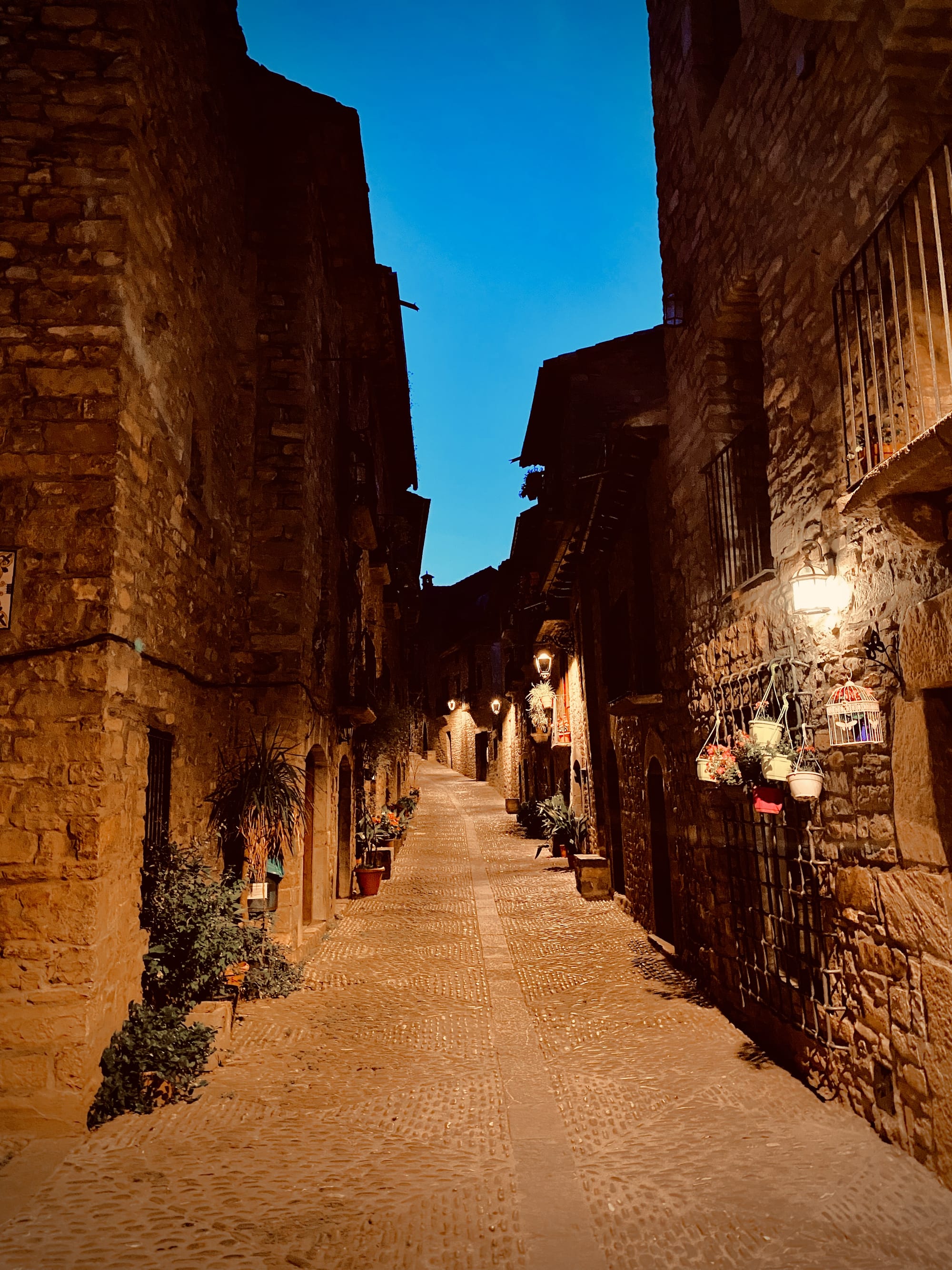
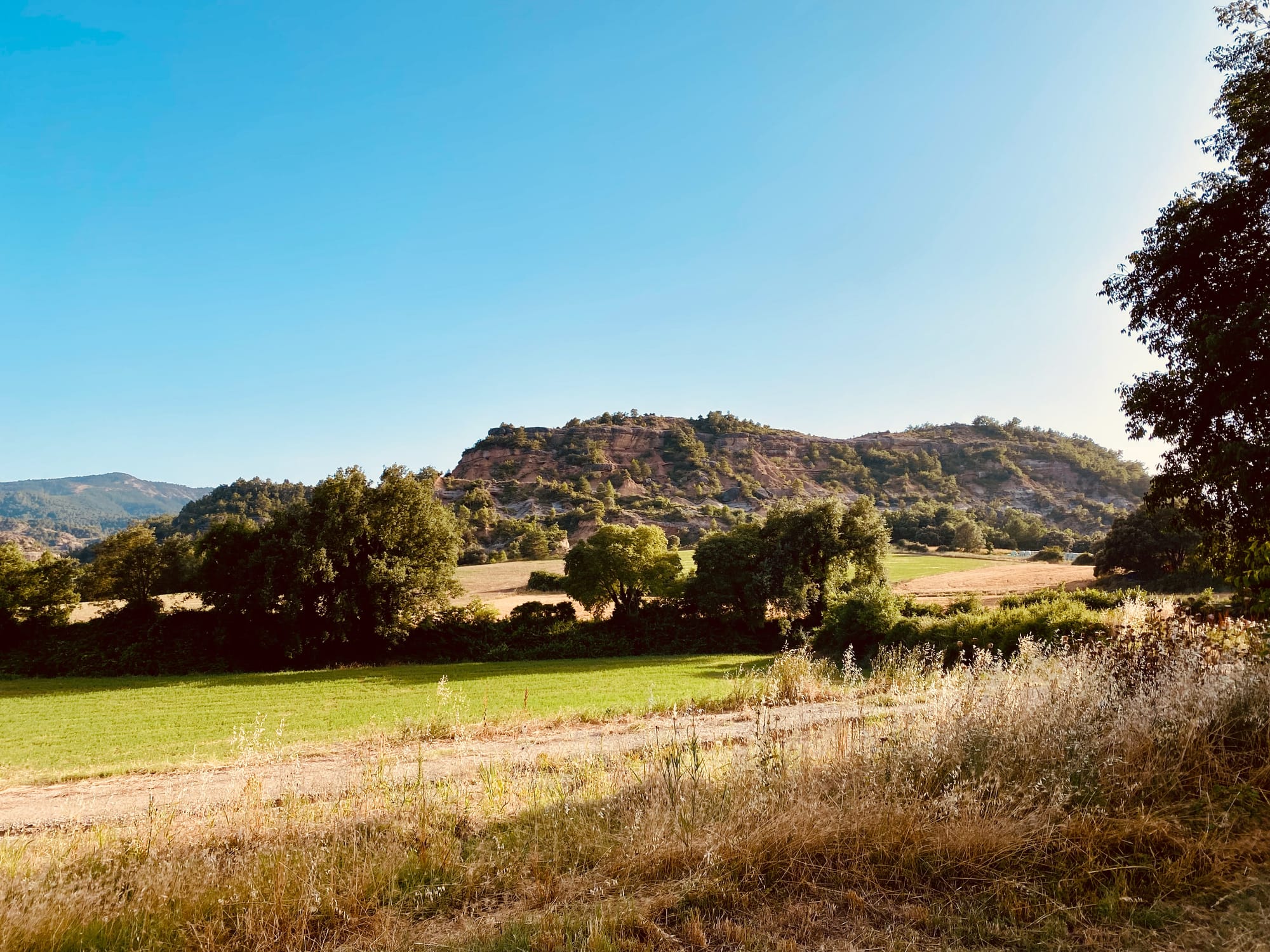
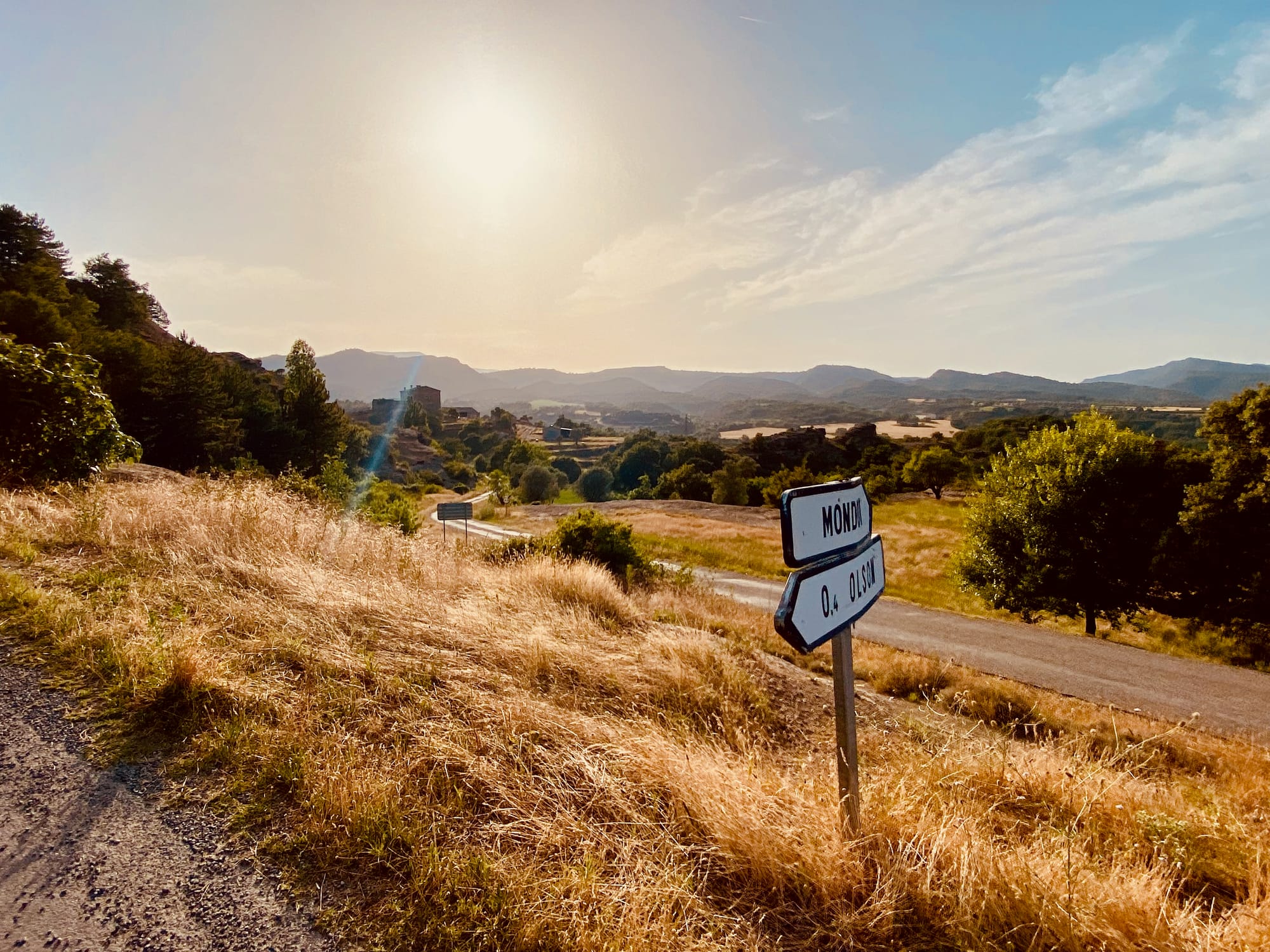
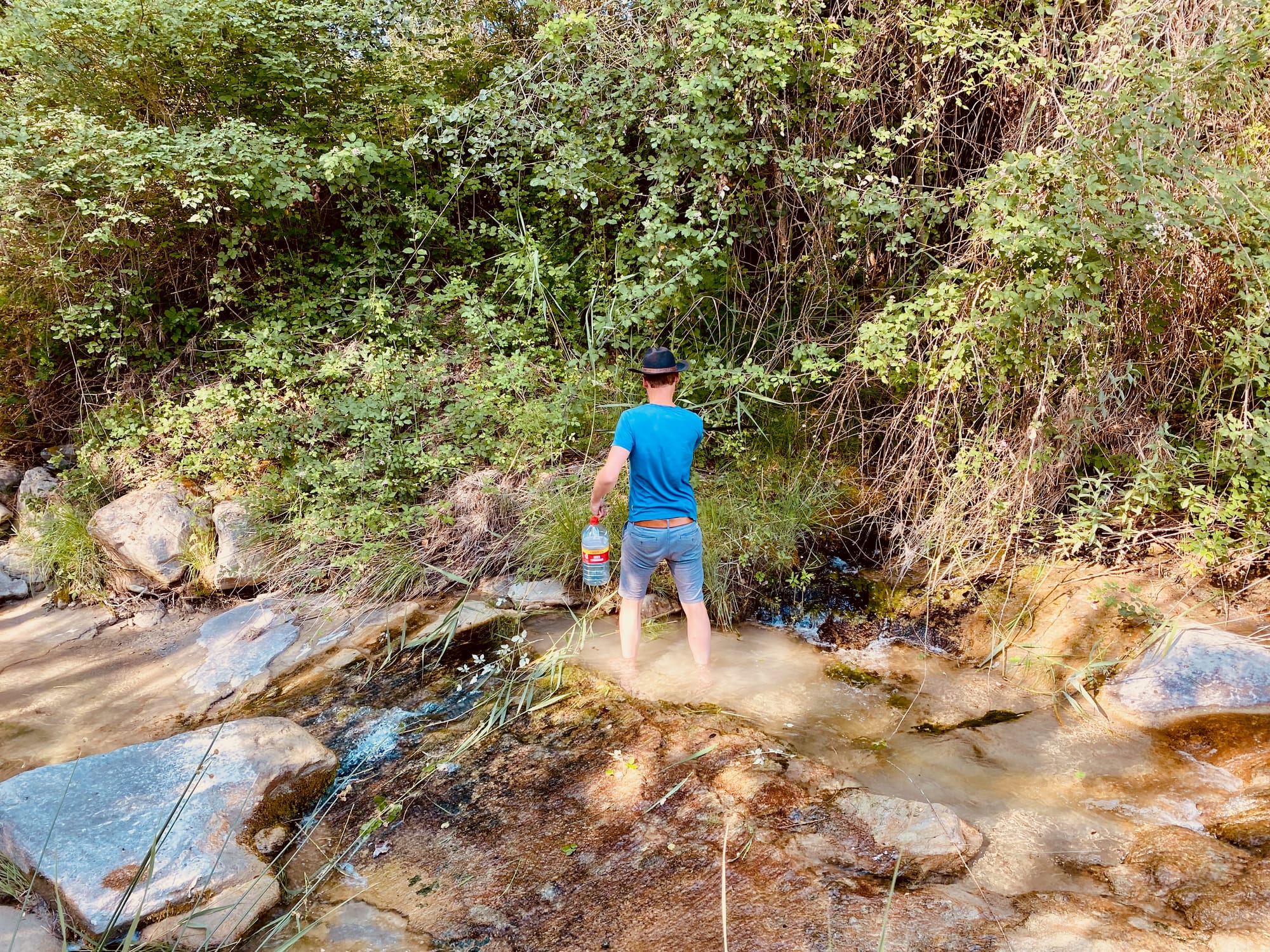
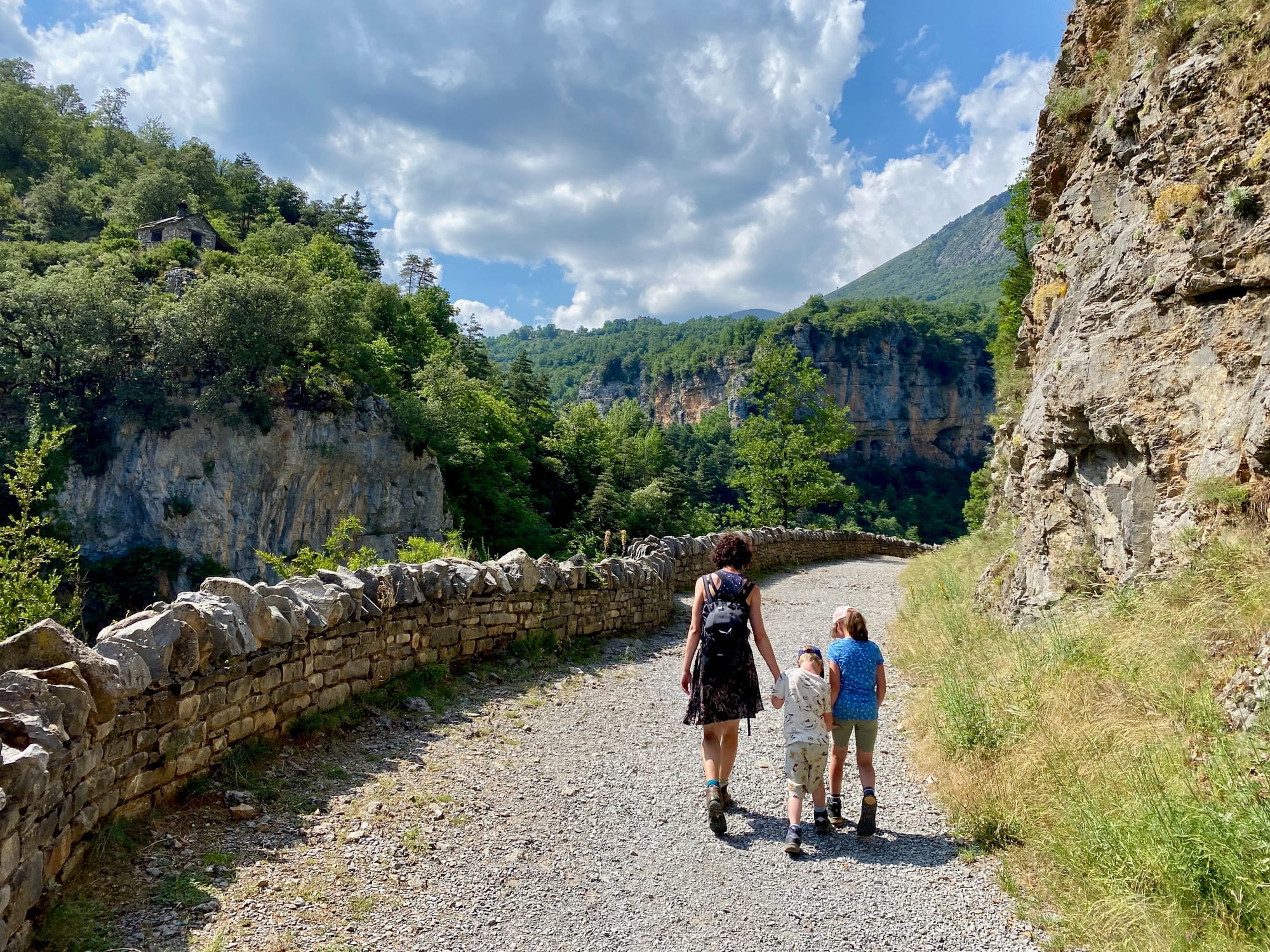
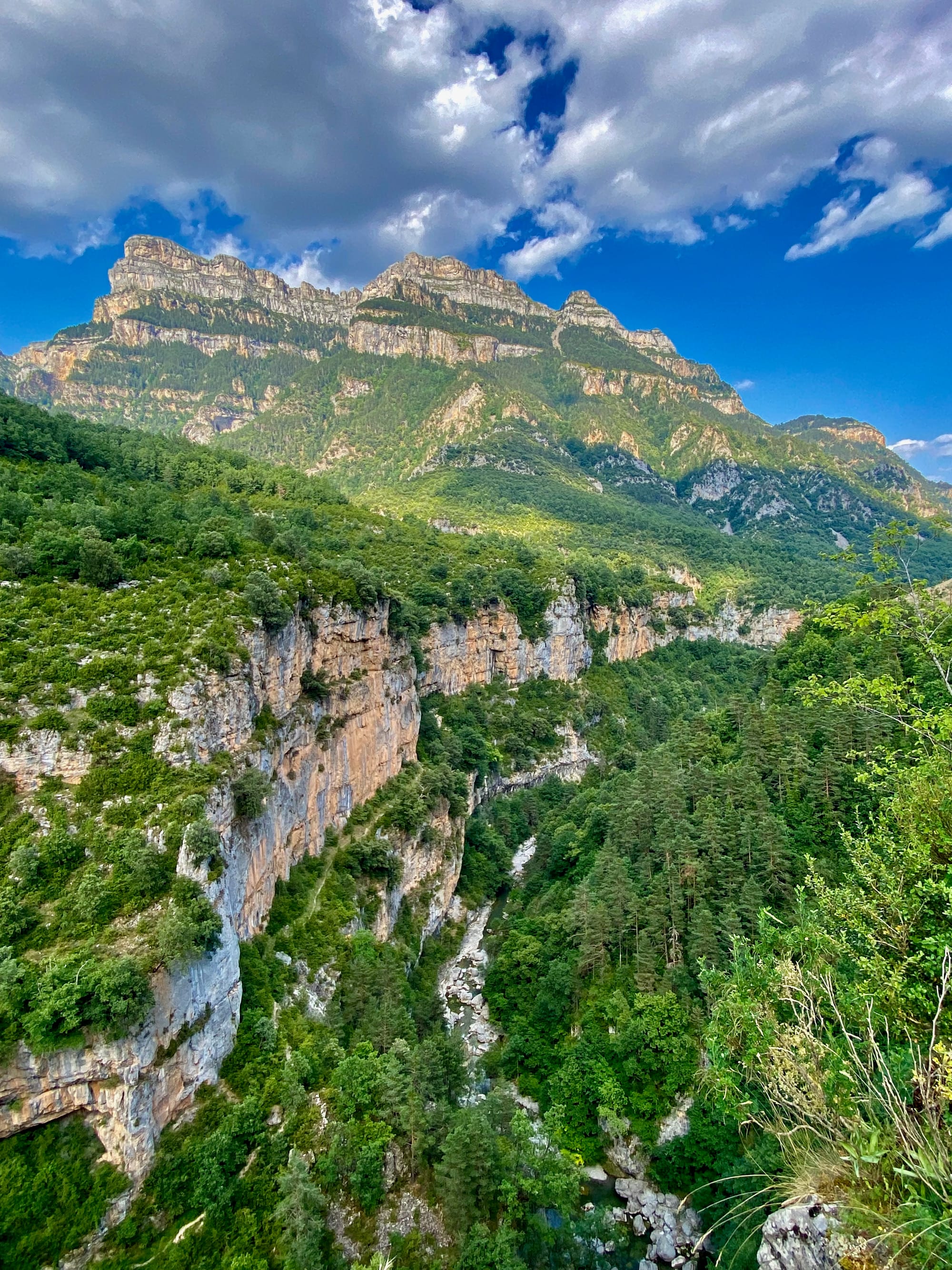

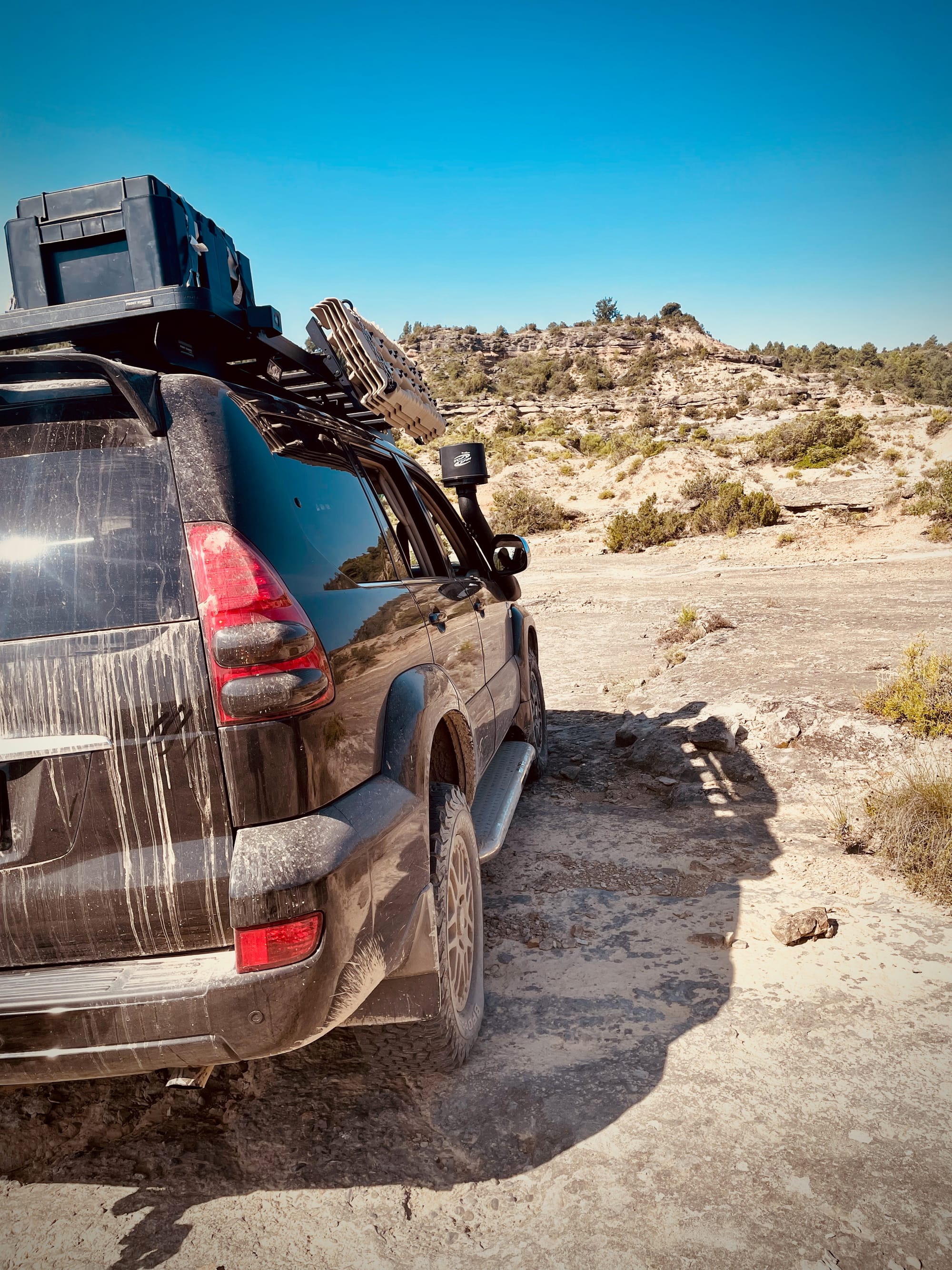
The region of Aínsa is really a treasure of nature, natural wonders and solitude. During our stay, there was very little tourism and we really enjoyed that because it feels very different than South Tyrol were there are just too many tourists the whole year around. It felt much better ...
Join us on a quiet offroad journey deep into the Spanish backcountry — far away from civilization, noise, and paved roads. This short film captures the final stretch to our hidden riverside camp, where we spent days immersed in nature and solitude. This was the drive to our camping spot near Aínsa — a real adventure ...
There was also an issue with the car where we had to go to a workshop nearby to get it looked at. While driving over rough terrain, rocky roads and bumpy unpaved roads, there was a strange noise coming from the front axis. It sounded like an issue with the suspension. At the workshop, the guy quickly figured out that the right wheel bearing needed to be changed since it was worn out.
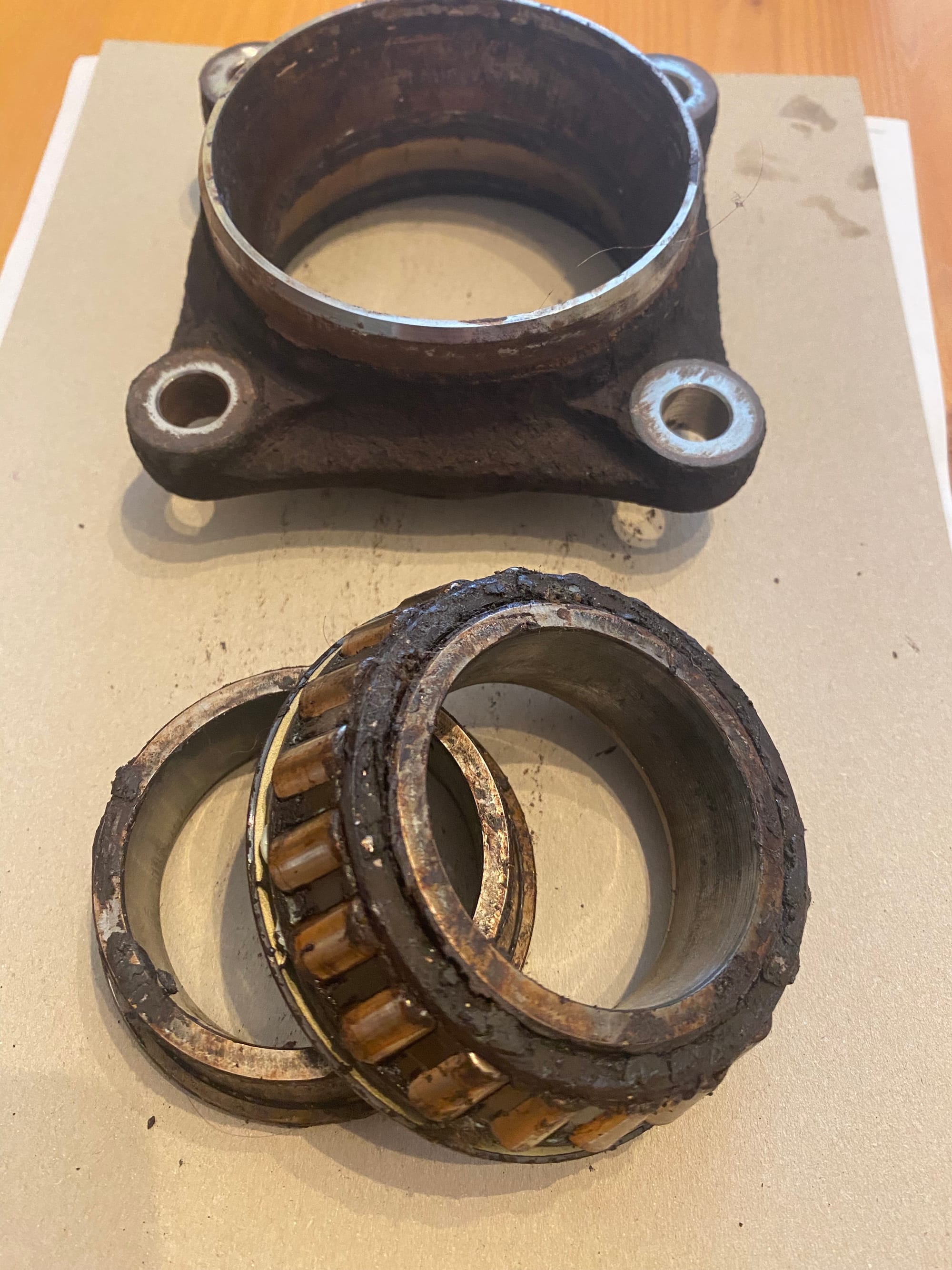
However, after he replaced the part with a new one, the noise reappeared. I investigated a little bit further and the issue maybe worn out tie rod ends. However, since the driving and steering behaviour was still good, it keeps straight when braking, the issue was not considered safety critical.
Bardenas Reales - A Surreal Environment

Found in the southeast corner of Navarra, the Bardenas Reales is one of Spain’s most surreal landscapes — a semi-desert that feels straight out of a sci-fi film. Shaped by centuries of wind and water erosion, this arid expanse is a mosaic of barren plateaus, sculpted clay hills, canyons, and dry riverbeds, glowing in earthy tones of ochre, beige, and red.
It's hard to believe you're still in green northern Spain when you first arrive. The terrain feels raw, cinematic, and strangely silent — often compared to Utah or Arizona. But unlike the American West, you can explore much of it by car, bike, or foot, with a network of dusty tracks that wind through the desert floor.
The Castildetierra, an iconic rock formation that looks like a giant stone chimney, has become the unofficial symbol of the region — and is a must-stop photo spot for anyone passing through.
Bardenas Reales is perfect for overlanders and wild-nature lovers. Although overnight camping is not allowed inside the natural park boundaries, there are several rural parking spots and scenic rest areas just outside, making it a great day trip with the feel of an expedition. And with sunrise or sunset lighting up the clay formations in gold and rose hues, it’s a photographer’s dream.
Despite its stark appearance, this desert is very much alive — home to vultures, eagles, and wild herbs — and protected as a UNESCO Biosphere Reserve.
If you're journeying through northern Spain and want a destination that’s totally unexpected, Bardenas Reales delivers rugged beauty, peace, and a sense of otherworldly wonder.
We followed a 30-kilometer stretch of dirt road to fully take in the beauty of this striking landscape. The route winds around a military zone, so it’s important to stay on the designated path and avoid venturing too far off-track. Other parts of the region are also closed to the public — not just for safety, but to protect sensitive wildlife and fragile vegetation. Respecting these boundaries helps preserve the unique character of this wild and rugged area.
Temperatures climbed to nearly 40°C, but it wasn’t just the heat that challenged us — the intense radiation from both above and the sunlit ground made our skin tingle the moment we stepped outside. It felt as if the sun was pressing in from every direction.
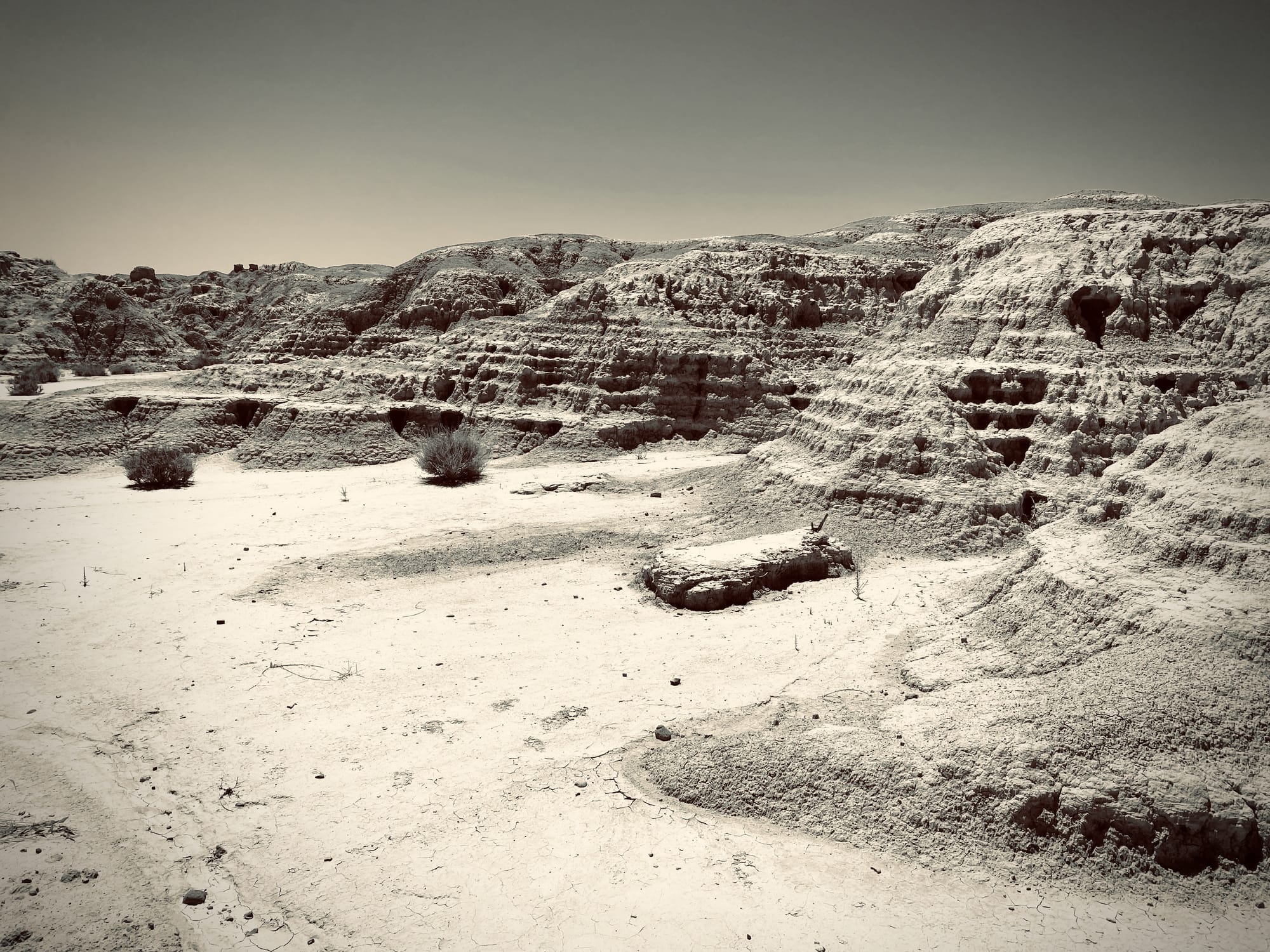
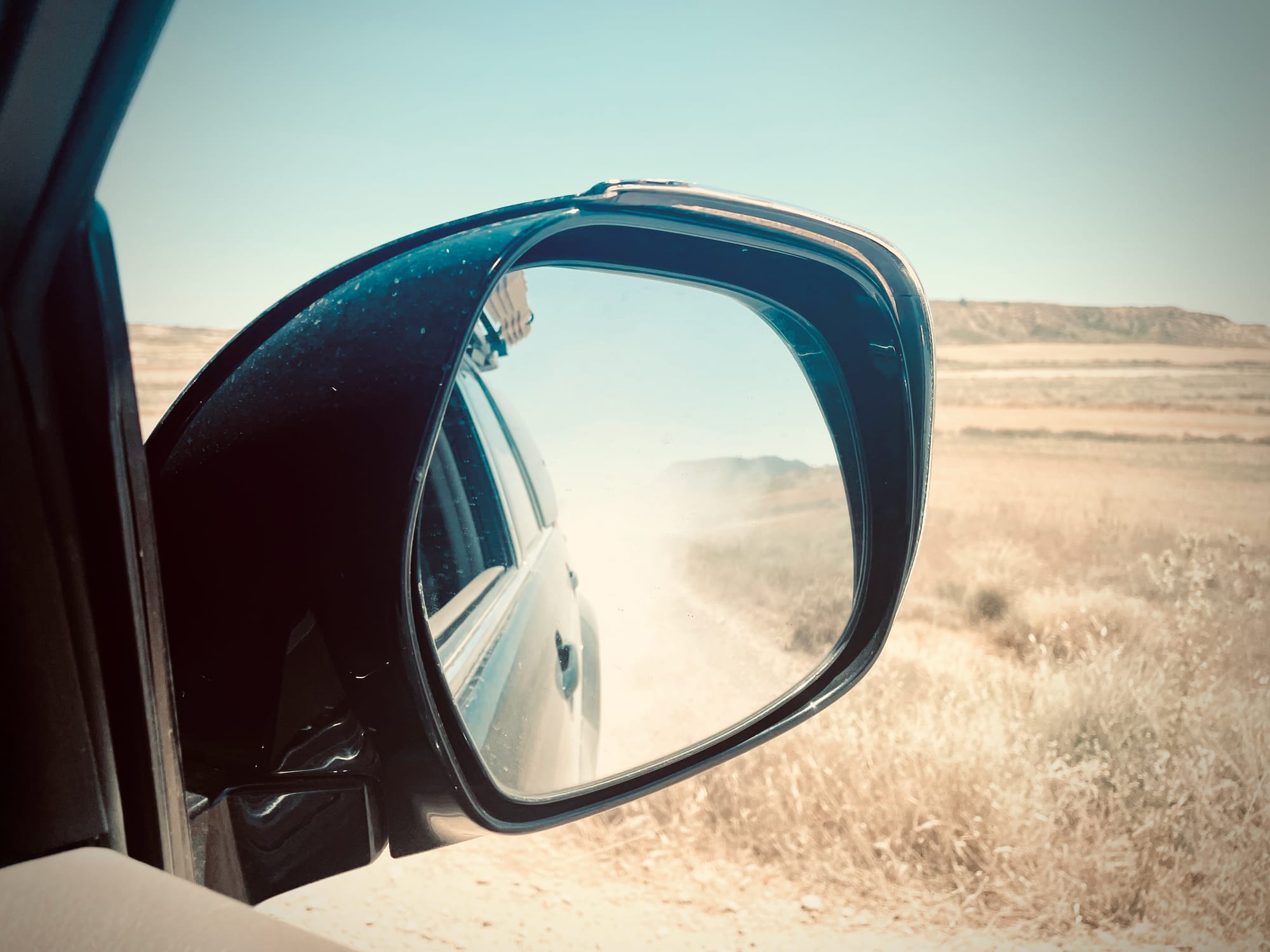
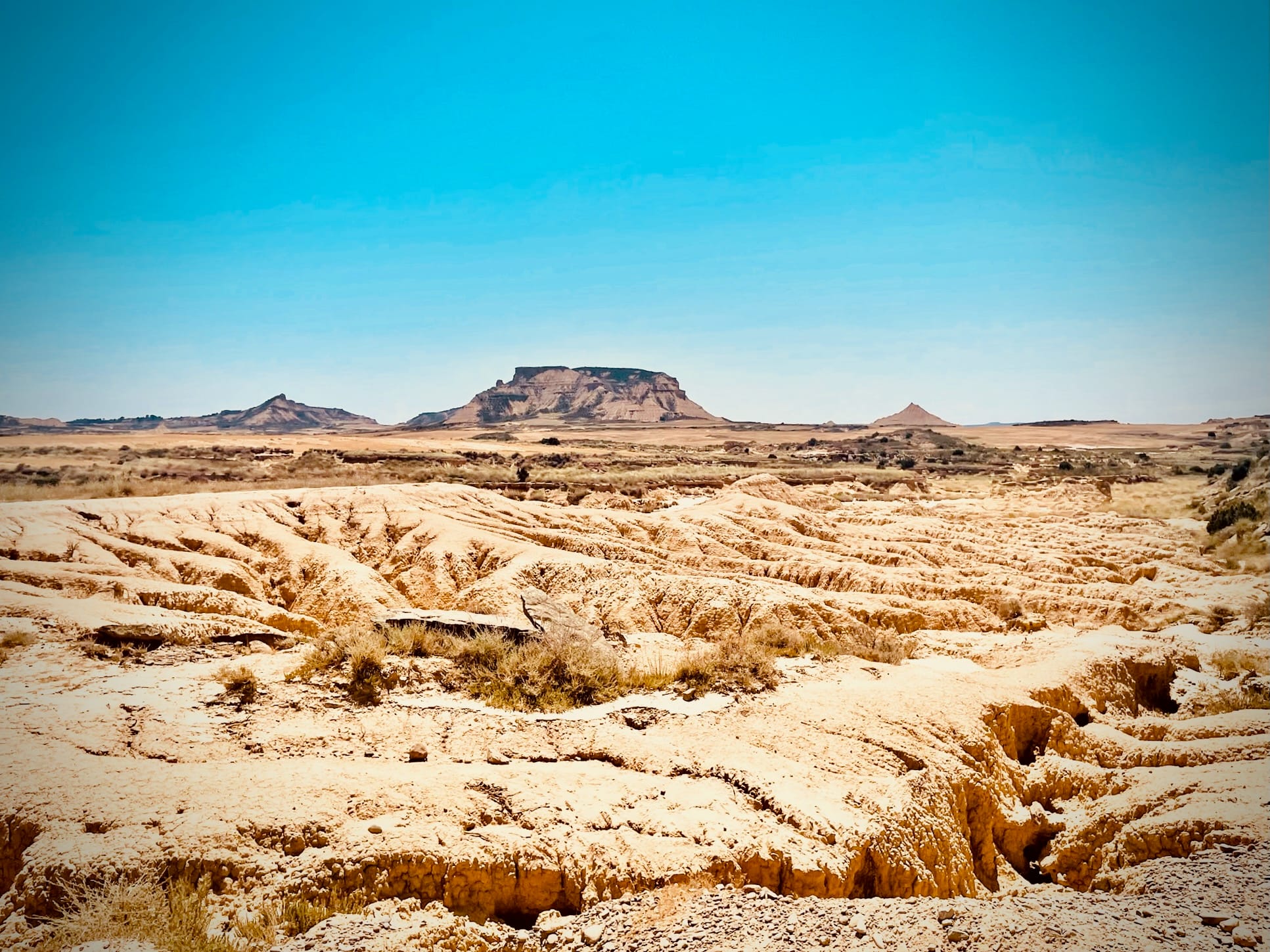
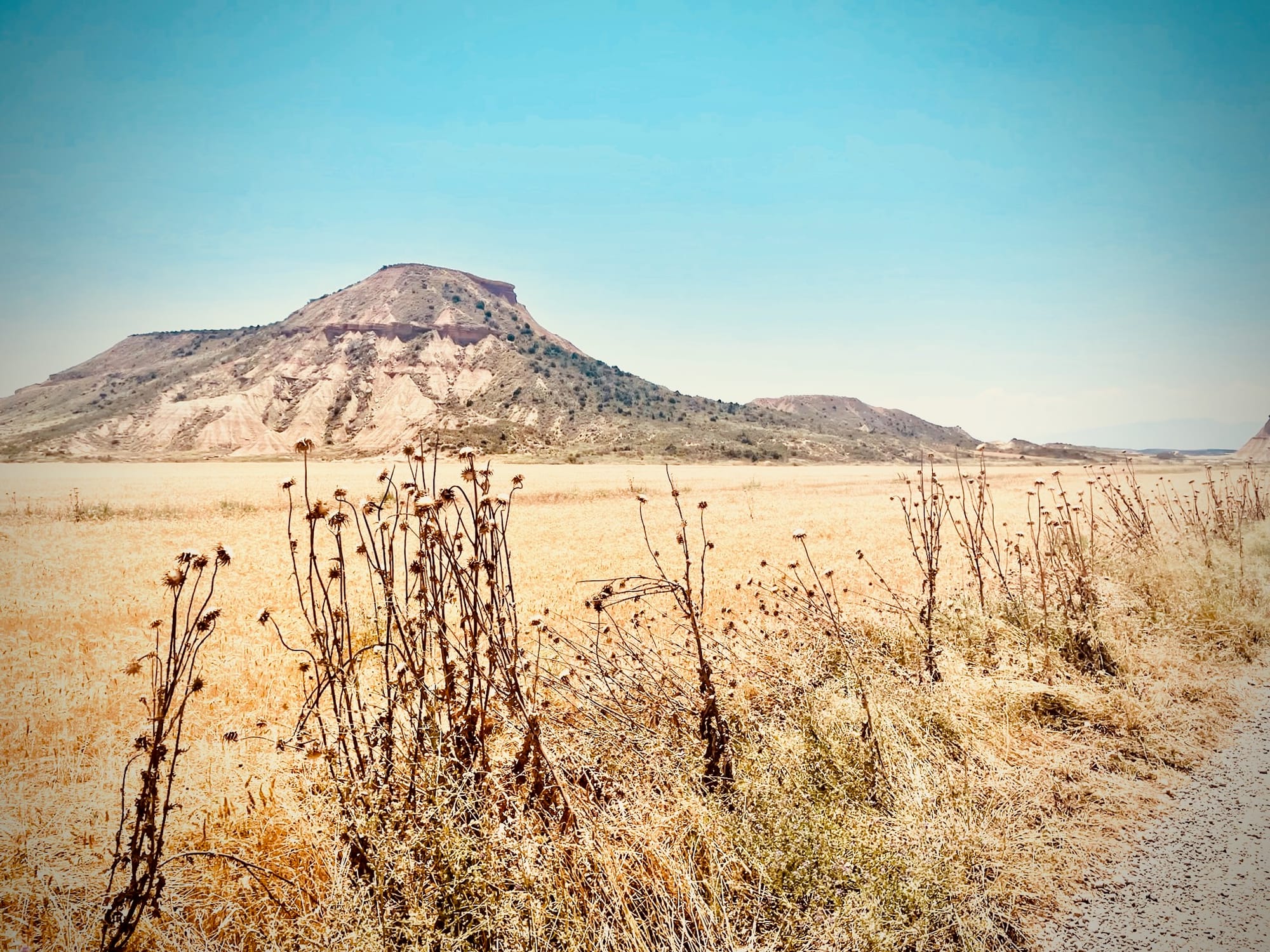
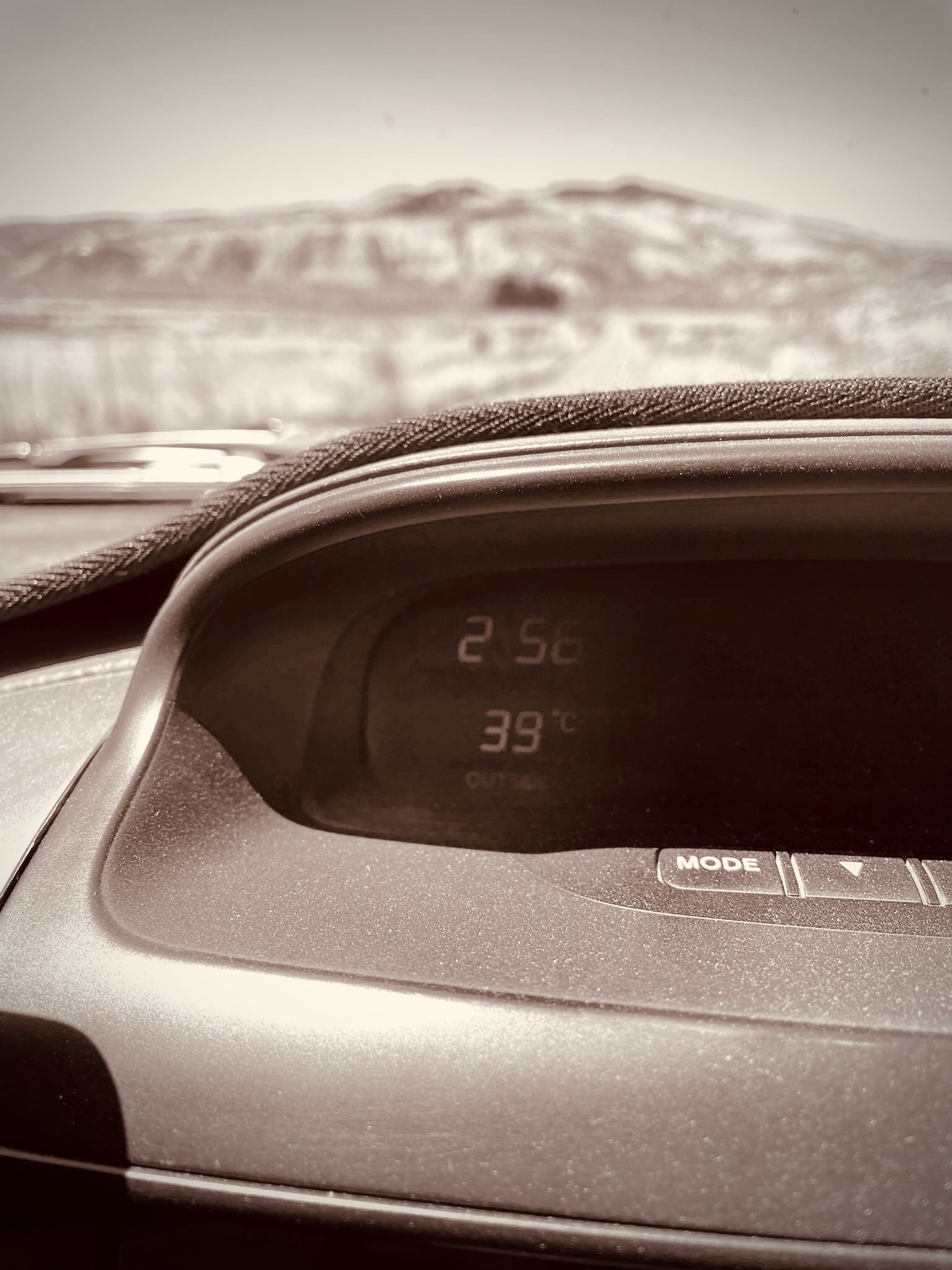
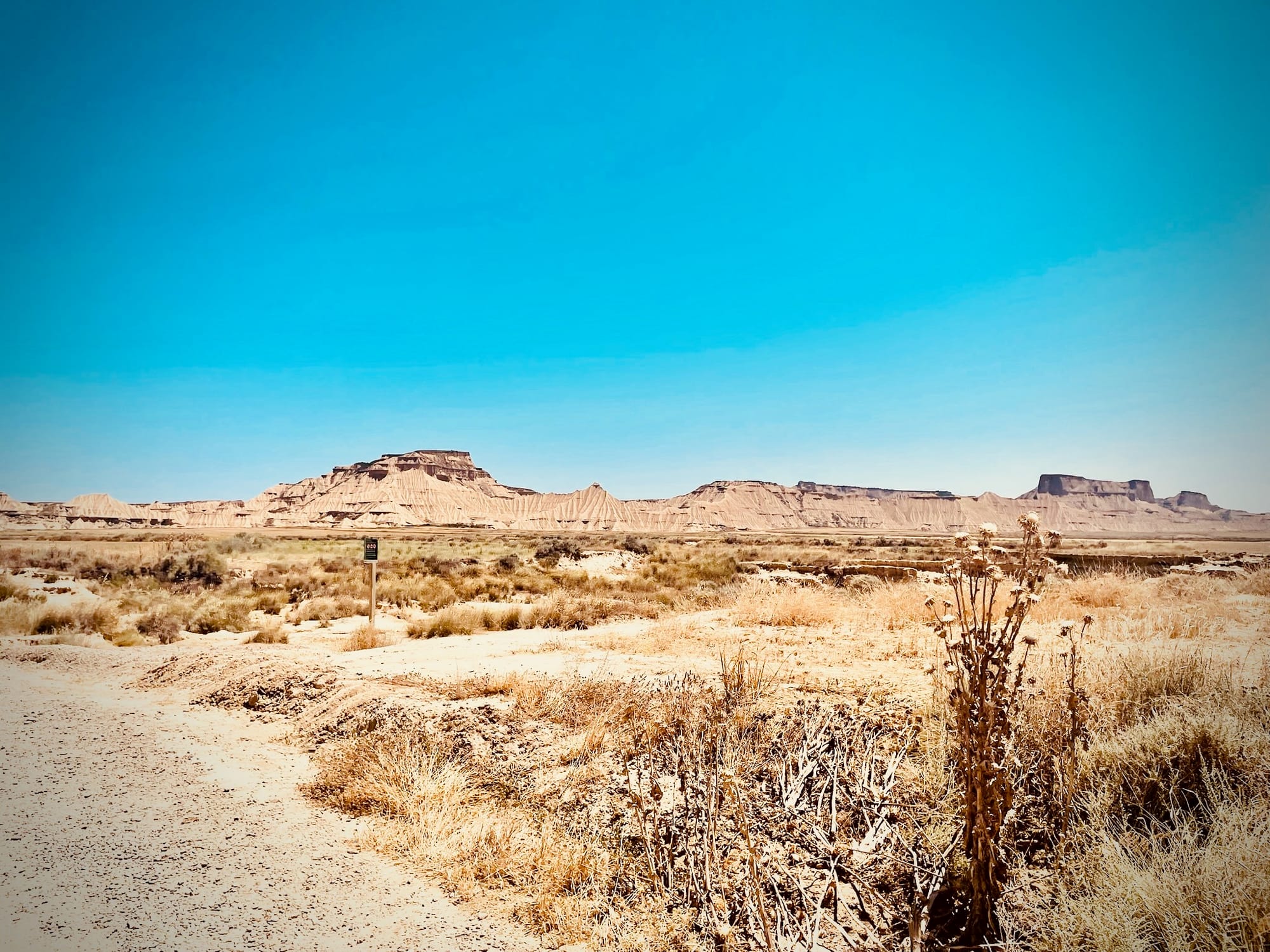
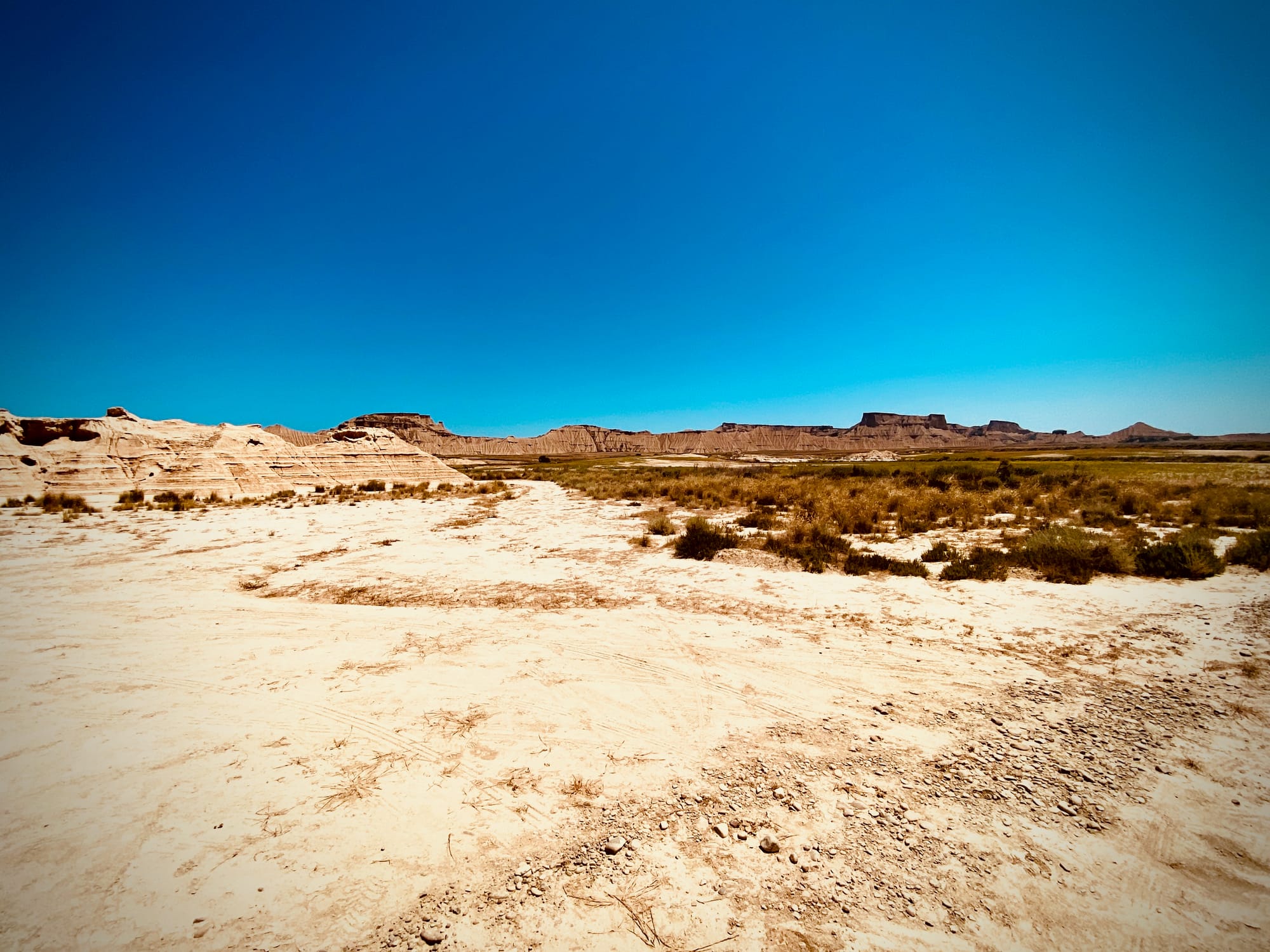
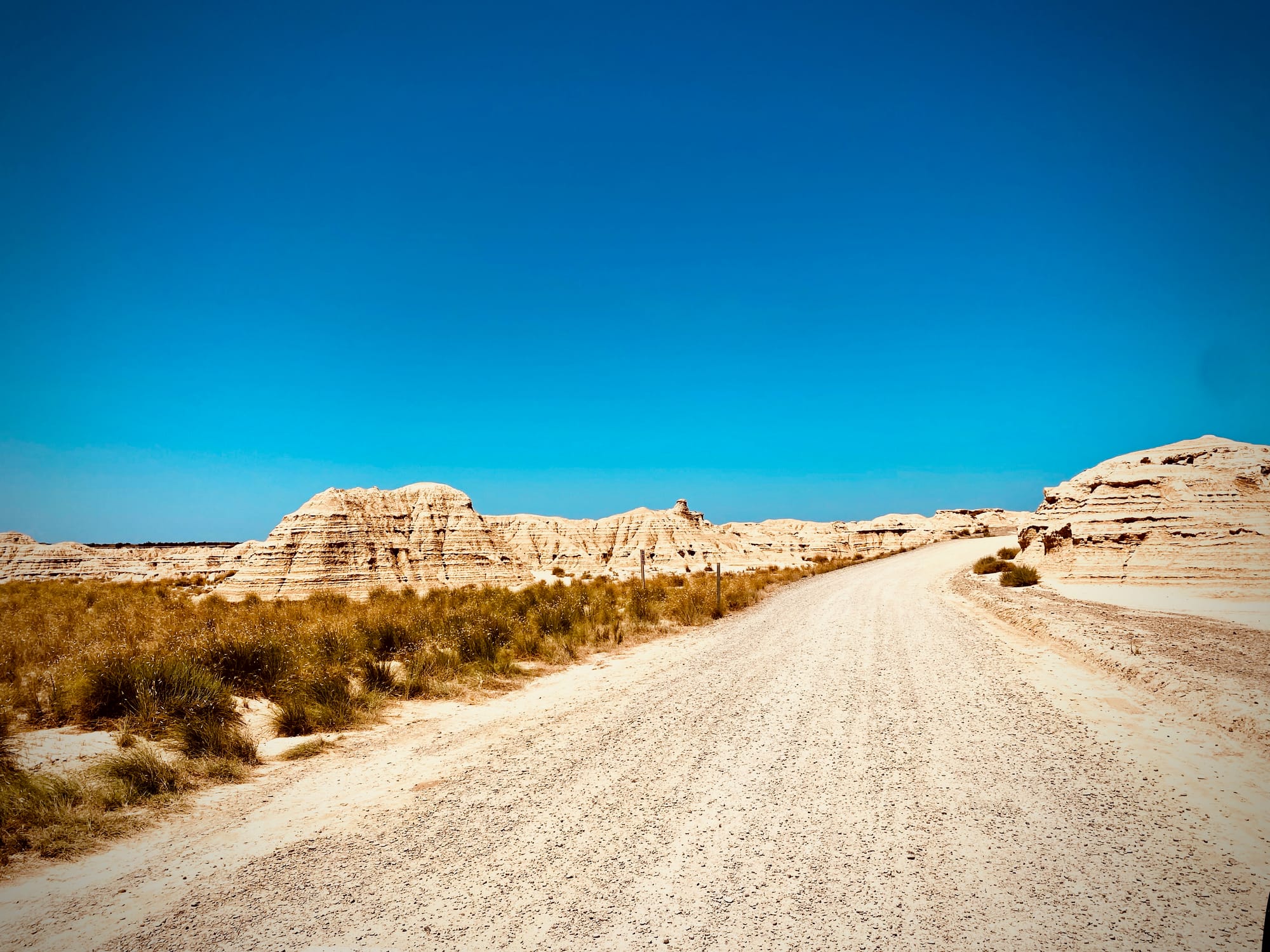
The Bardenas Reales quickly became one of our favorite places — a surreal, expansive landscape full of unexpected life and wonder. Every turn revealed something new: strange rock formations shaped by centuries of wind and erosion, and a richness of detail we had never encountered before. It's the kind of place that leaves you in quiet awe, knowing that when we return, the landscape will have subtly changed — shaped once again by time and the elements.
The Ebro Delta

The Ebro River (Río Ebro) is the longest river entirely within Spain, carving its way from the green foothills of Cantabria all the way to the Mediterranean Sea near Tarragona. Along its winding 910 km course, the Ebro shapes valleys, feeds rice fields and vineyards, and brings life to countless villages and towns across regions like La Rioja, Navarra, Aragón, and Catalonia.
Driving or camping near the Ebro, you quickly sense its quiet strength. The river is wide and slow in many places, bordered by reeds and poplar trees, and home to herons, kingfishers, and even wild otters. In contrast, its upper stretches near the Pyrenees are fast-flowing and rugged — a favorite for kayakers and trout fishermen.
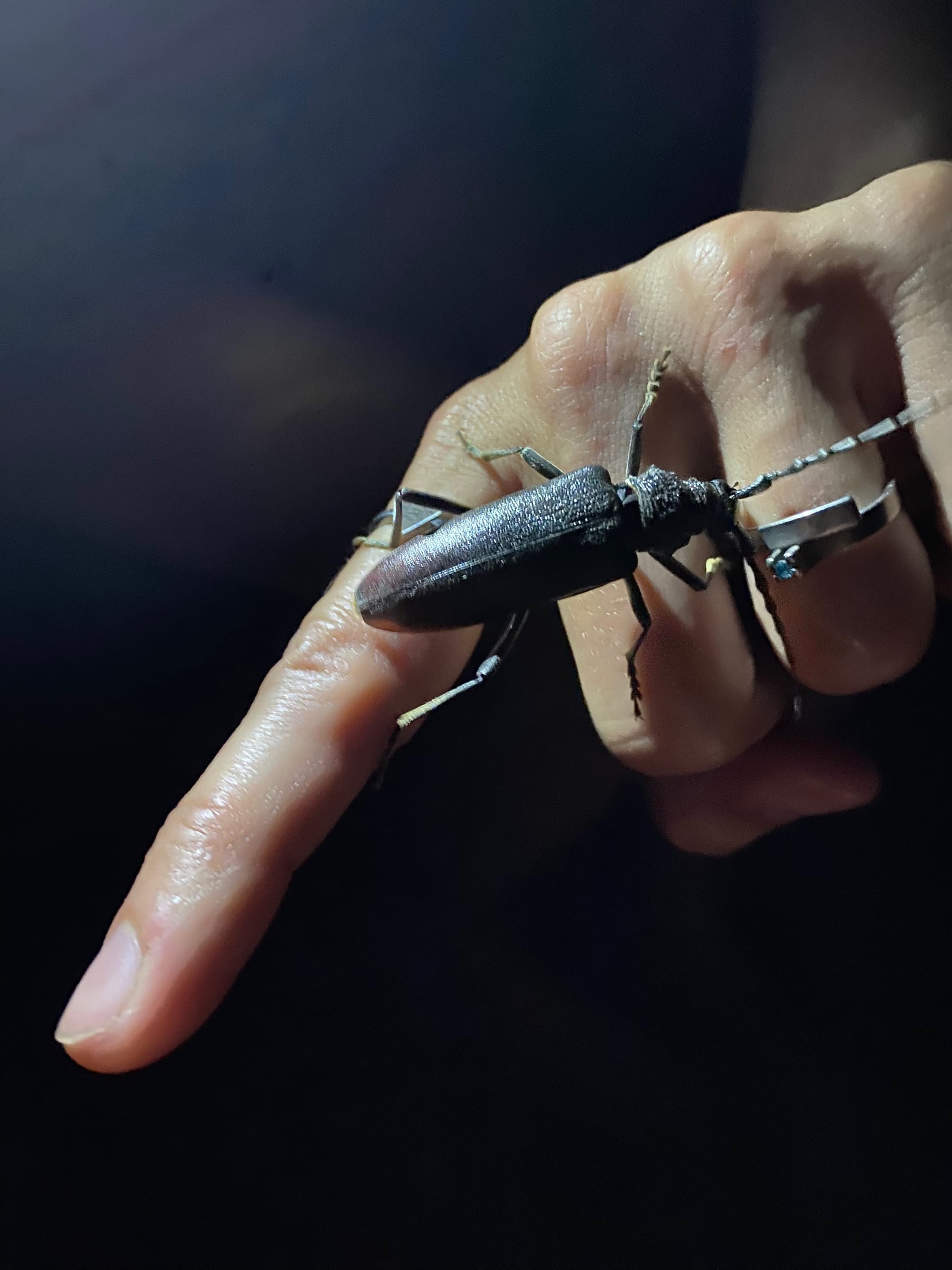
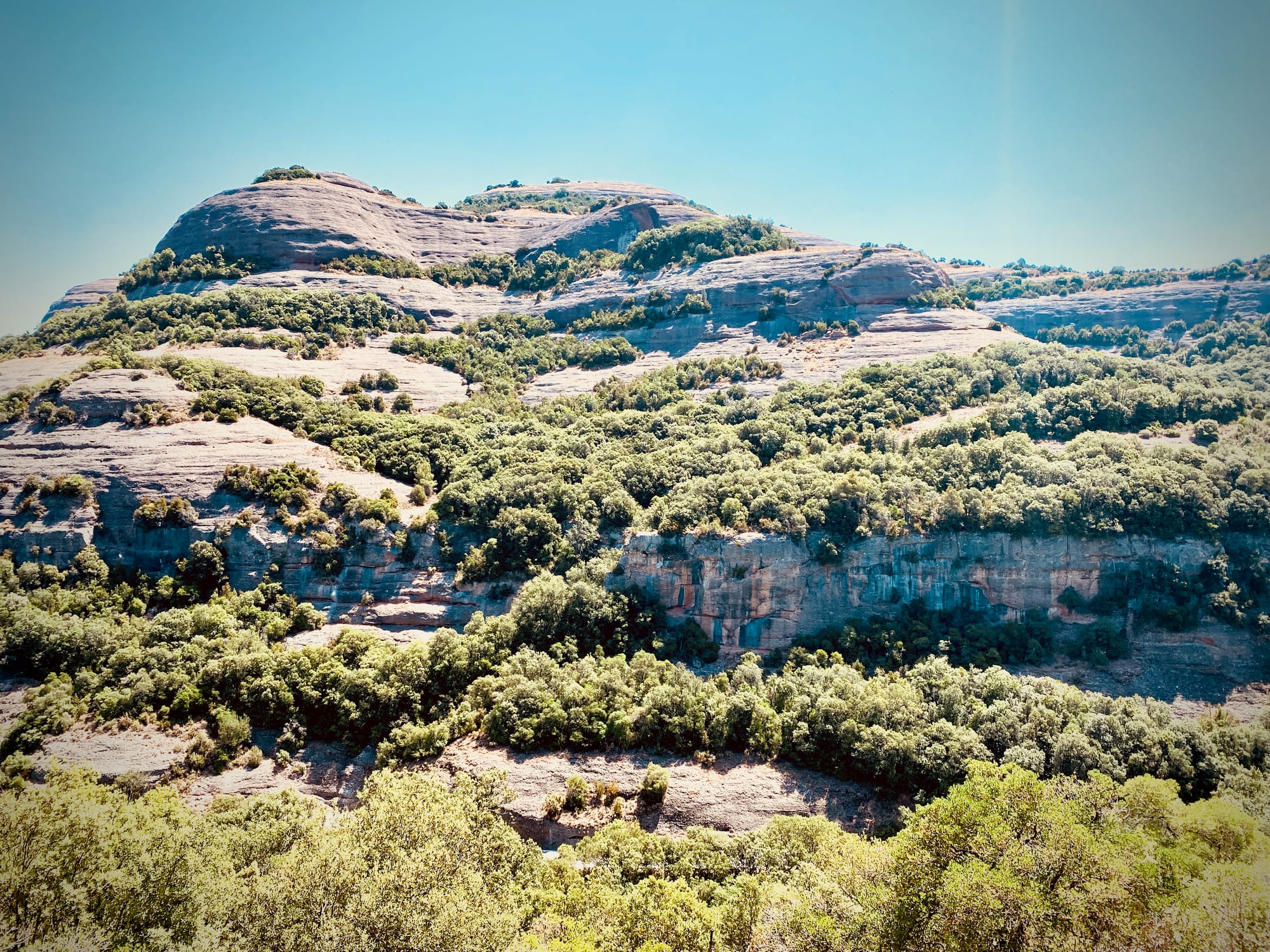
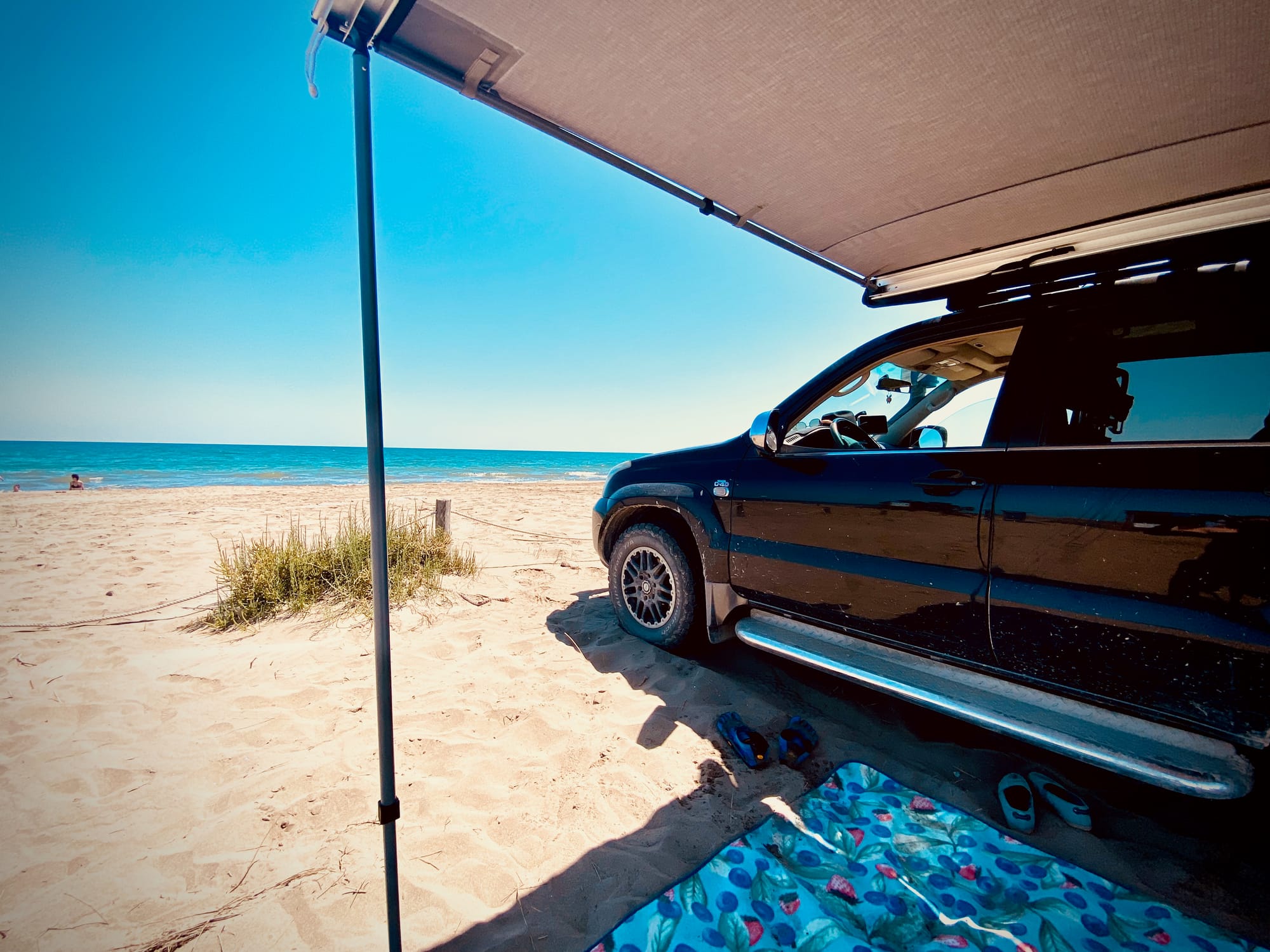
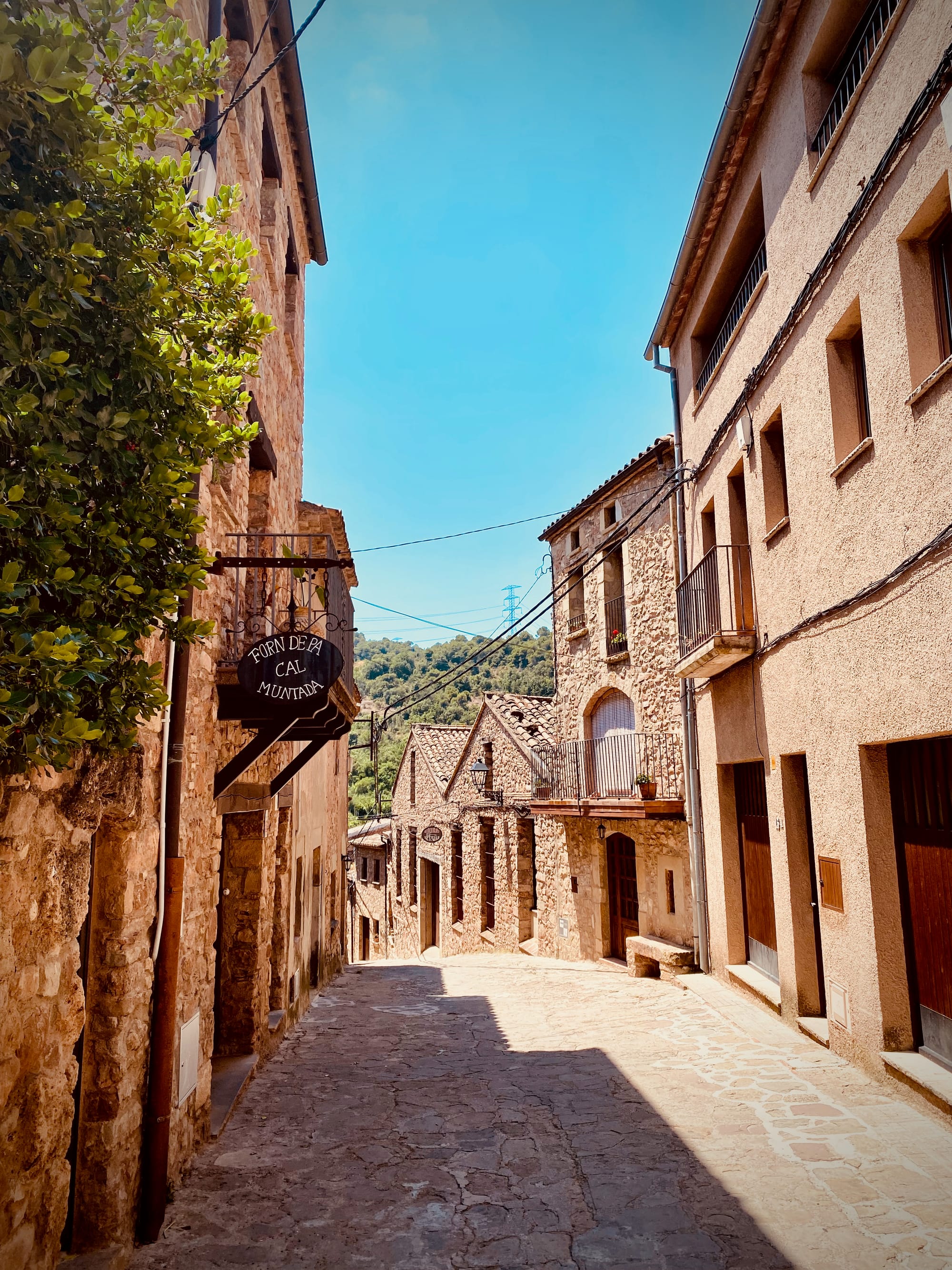
More than just a river, the Ebro is a lifeline of culture, agriculture, and ecology, connecting landscapes as diverse as snowy peaks, desert canyons, and lush deltas. It’s the kind of river that invites you to stop, sit by the bank, and take in the rhythm of the land
Here, in the back country of the Ebro river, the temperatures rose at the end of June up to 43°C during the day - the highest what we have encountered on our trip. When needing to cool off, we went to the coast were we went swimming in the sea and were we could enjoy temperatures around 31°C during the day.
At the Delta, as far we could see were only rice fields for miles and miles. Still home to many different birds and even flamingos and very large bugs! This one sounded like a helicopter 😄
The Not-So-Relaxing Return
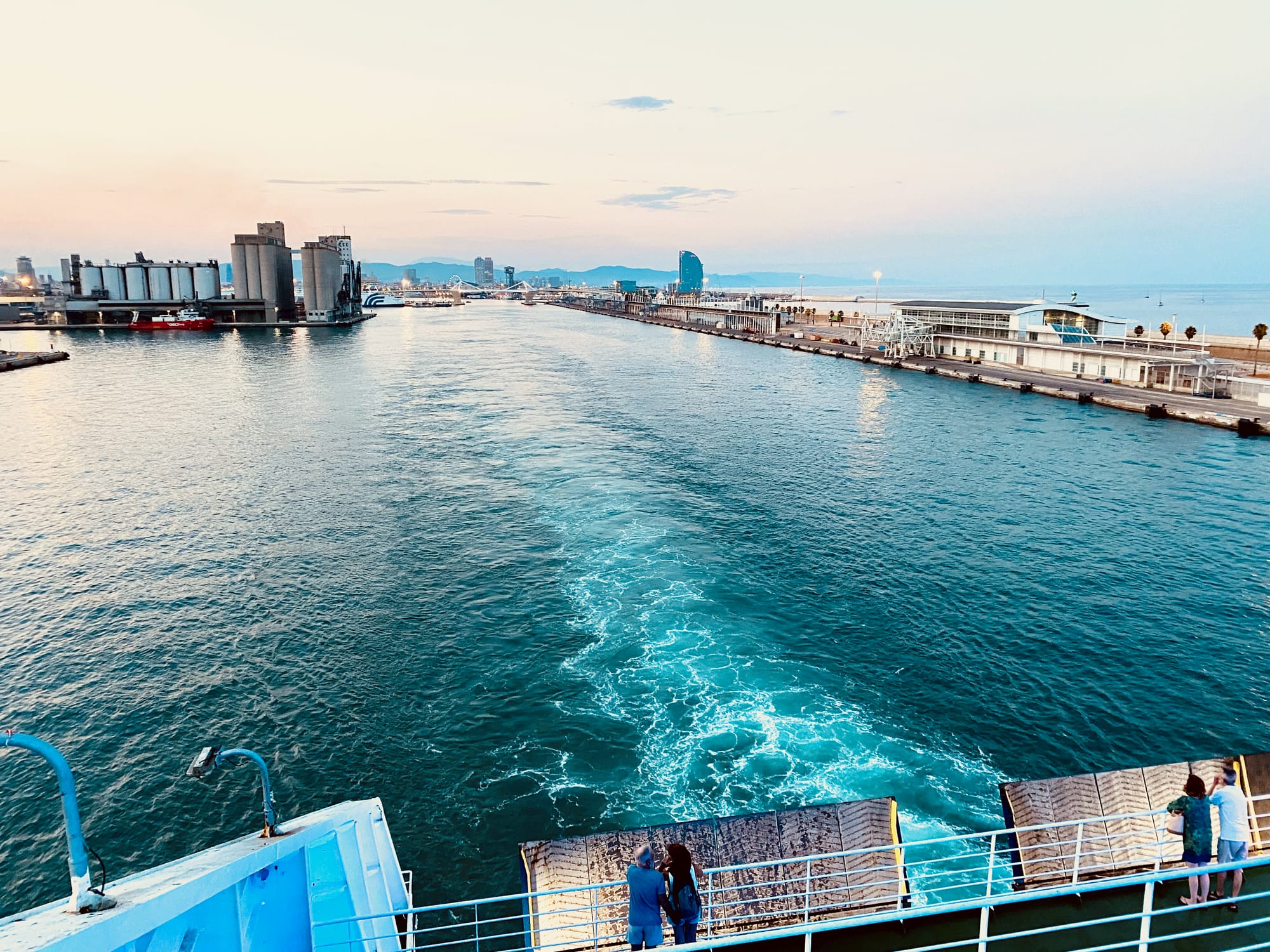
On our trip back to Italy, we took the ferry from Barcelona to Civitavecchia. Maybe next time we choose another route since the drive to and around Barcelona was stressful, to say the least. To get to the ferry, you do not need to drive too far into the city but this little bit was enough for me. Roundabouts with three lanes and countless traffic lights. But don't forget and watch out for them taxis and busses crossing into your lane! Damn taxis, these were really a pain in the ass! They recklessly took our right of way in their little yellow and black Toyotas and deliberately tried to ram us! F****** morons. I was very glad to finally get out of this city ...
The boarding of the ferry began at 6 pm and with the departure set to be at 9:30 pm we still had to wait 2 hours to finally board the ship. When having small kids or dogs, this can be problematic, since there were no restrooms and we had to wait inside the car ...
Planning our Trip
From South Tyrol in northern Italy to the Verdon River in France, with its beautiful nature and canyons, to the northern part in Spain, where we visited the Aragon with its beautiful mountains and canyons and the Navarra region with its interesting desert like landscapes.
I created a map with the approximate locations of our camp sites. Due to privacy reasons, the exact position cannot be shown.
In the following map, I have included interesting POIs, with canyons, beaches, view points for bird watching, starting points for hikes and parking places.
Conclusion
After 4,570 kilometers, countless impressions, and a deep connection with the landscapes we crossed, our journey has come to an end. These past two and a half weeks were anything but restful — yet they were profoundly rich in experience. We learned so much about ourselves, our limits, and what truly matters.
Far from the noise of everyday life, we found ourselves immersed in nature and complete solitude. Out there, we had to rely on ourselves — and in doing so, we felt more present, more grounded, and more alive. It was raw at times, but honest and beautiful. Our kids experienced the joy of waking up to birdsong, watching the stars from the tent, and understanding what it means to live simply — and fully — in the wild.
Now that the dust has settled and the tires have cooled, there's a quiet ache — the kind you feel when saying goodbye to something truly meaningful. We leave with muddy boots, tired hands, and hearts full of memories. It’s hard to return, but we’re grateful for everything the road gave us.
Until next time — and there will be a next time.
Thanks for reading all the way to the end — I truly appreciate your interest! Want a closer look at the gear I’ve built, the paths we've taken, and the stories behind our adventures? Become a member to unlock exclusive content, hands-on DIY plans, and plenty of inspiration for your own journey!
